Robin Hood is one of the world’s best loved folk heroes and Nottinghamshire is proud to be his home. The legend of Robin Hood dates back to medieval times, when he was said to have lived in Sherwood Forest with his band of loyal followers, fighting against the tyranny of the Sheriff of Nottingham and Prince John. But was he real? Yep! Although it seems that Maid Marion wasn’t. Feel fee to read a bit more here: https://www.historic-uk.com/HistoryUK/HistoryofEngland/Robin-Hood/
Despite the name “Nottingham Castle,” there is no castle. There was one at one time, but it was demolished in 1651. For six hundred years Nottingham Castle was one of the most important royal castles in England. Its position guarding the bridge on the River Trent made it both a convenient, and an important, base for royal power in the midlands used by monarchs regularly until the early sixteenth century. It is now a museum and art gallery.
From https://citydays.com/places/nottingham-castle/:
“In its infancy, Nottingham Castle was a classic Norman wooden motte and bailey fortification, strategically overlooking the bustling town of Nottingham. The 12th century ushered in a transformation under Henry II, who replaced the wooden structure with a formidable stone castle, enhancing its strategic and political significance.
The castle’s narrative is intertwined with iconic figures of English history. During the reign of King Richard I (Richard the Lionheart), his brother Prince John, later King John, held the castle. This period is famously linked with the tales of Robin Hood, where the Sheriff of Nottingham, operating from this very castle, became Robin Hood’s arch-nemesis in folklore.
The English Civil War in the 17th century marked one of the castle’s most dramatic episodes. As a pivotal Royalist stronghold, it witnessed fierce battles before falling into Parliamentarian hands in 1642. The war left the castle in ruins, leading to its eventual demolition.
The late 19th century breathed new life into the ruins. Reimagined as a museum and art gallery in 1878, Nottingham Castle became one of the United Kingdom’s first municipal museums, marking a shift from a symbol of power to a beacon of culture and history.
The Ducal Mansion, rising from the ashes of the medieval castle, adds a touch of 19th-century grandeur to the historic landscape. According to one newspaper report from 1831, a former dweller at the mansion included an ‘ancient lady of rank’ who had a ‘fondness for lap dogs and a large ape – her constant companion.’ “
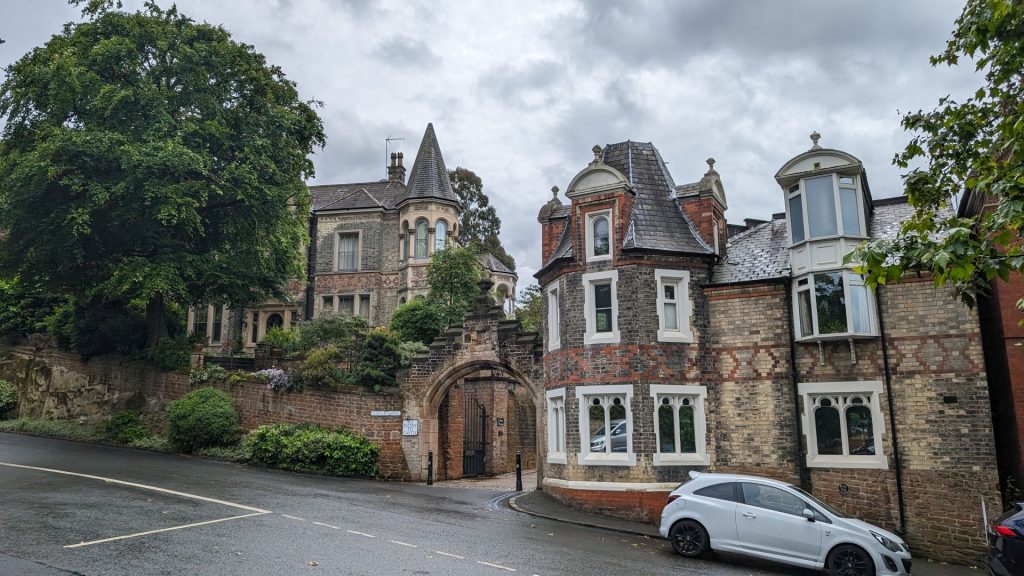
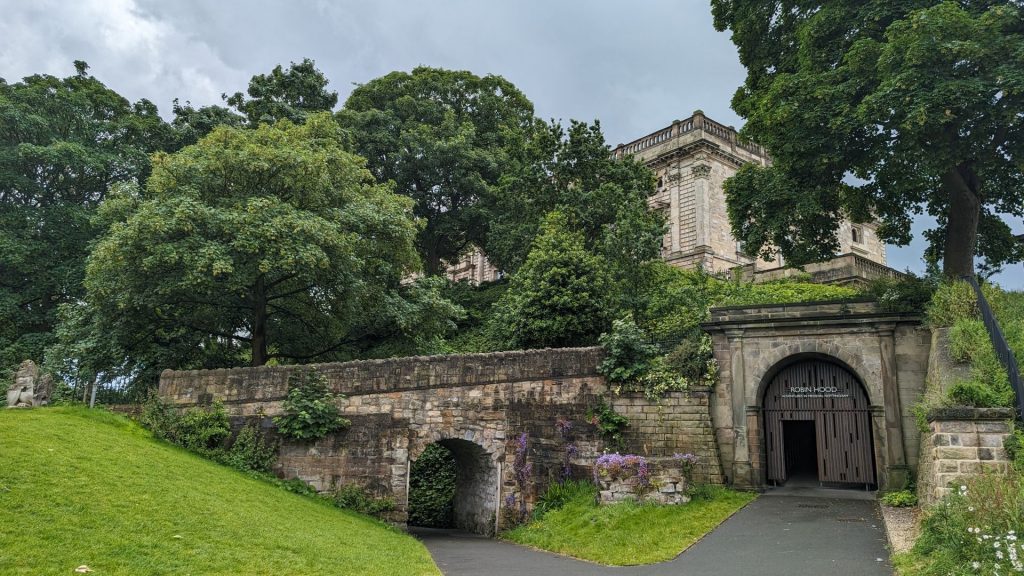
This entrance was castle-like:
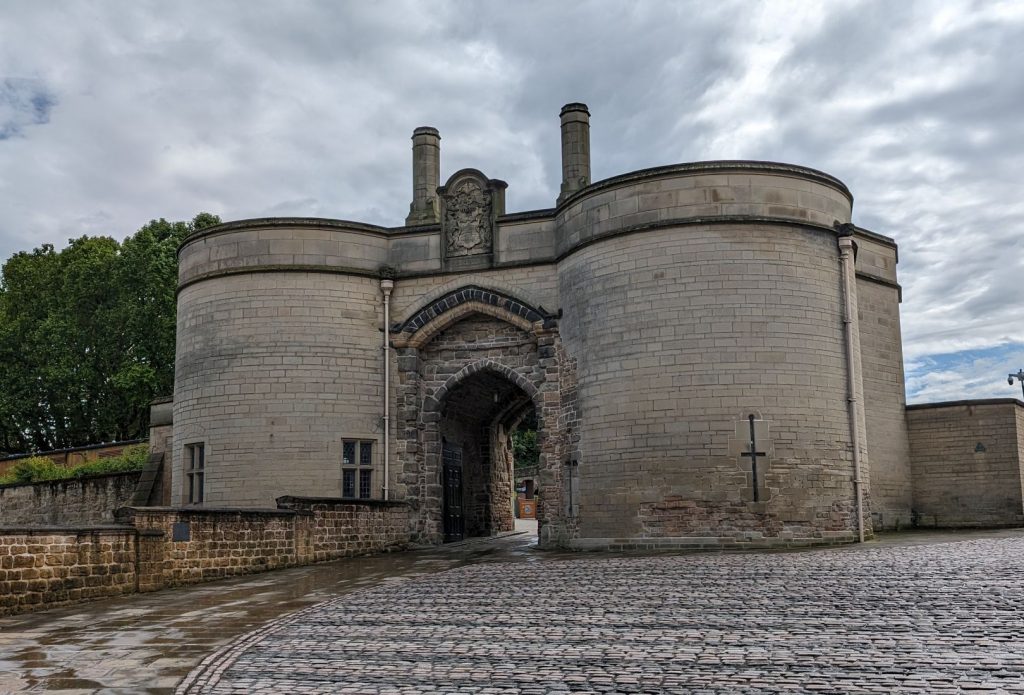
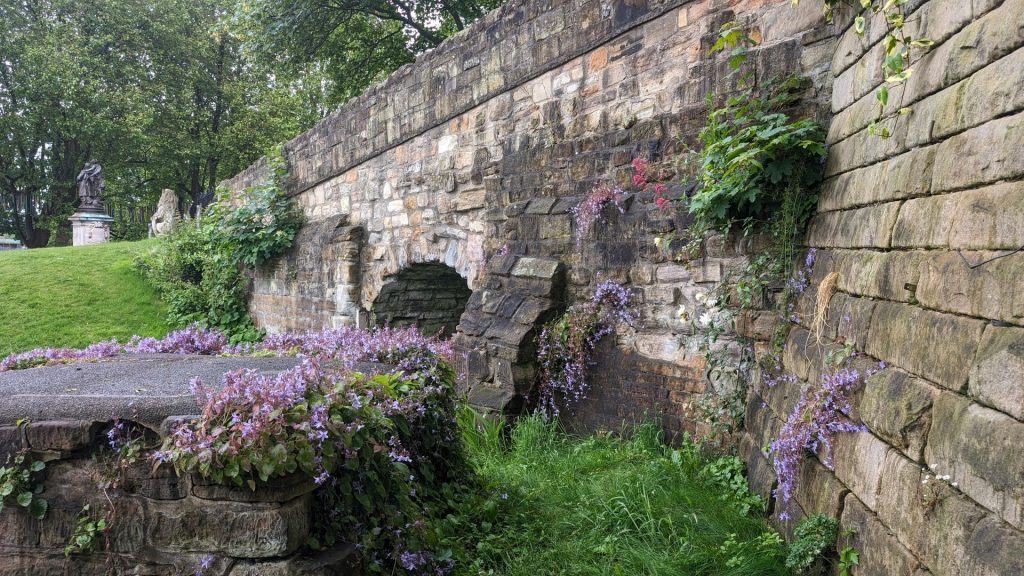
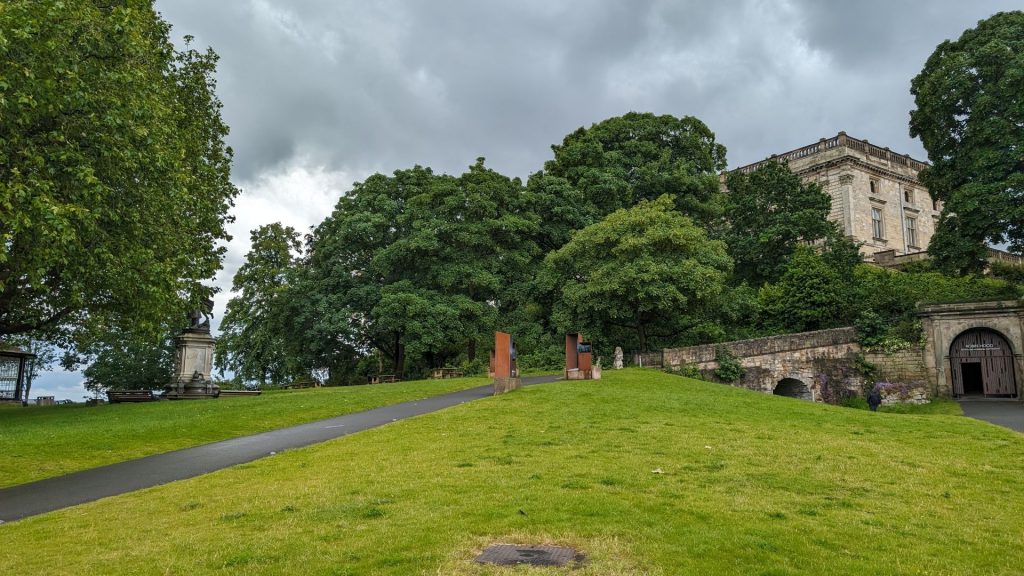
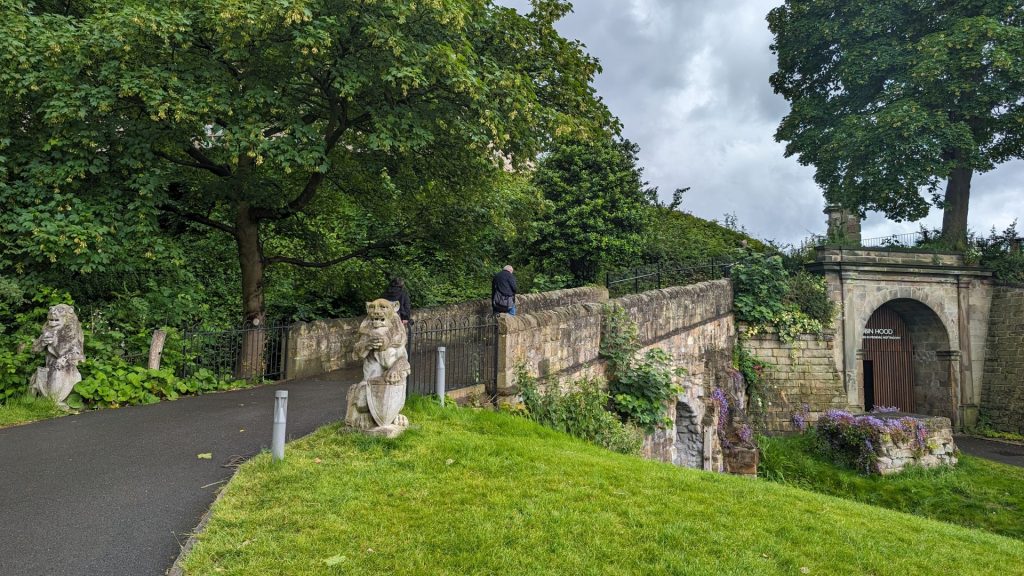
These three pictures show the building that exists today.
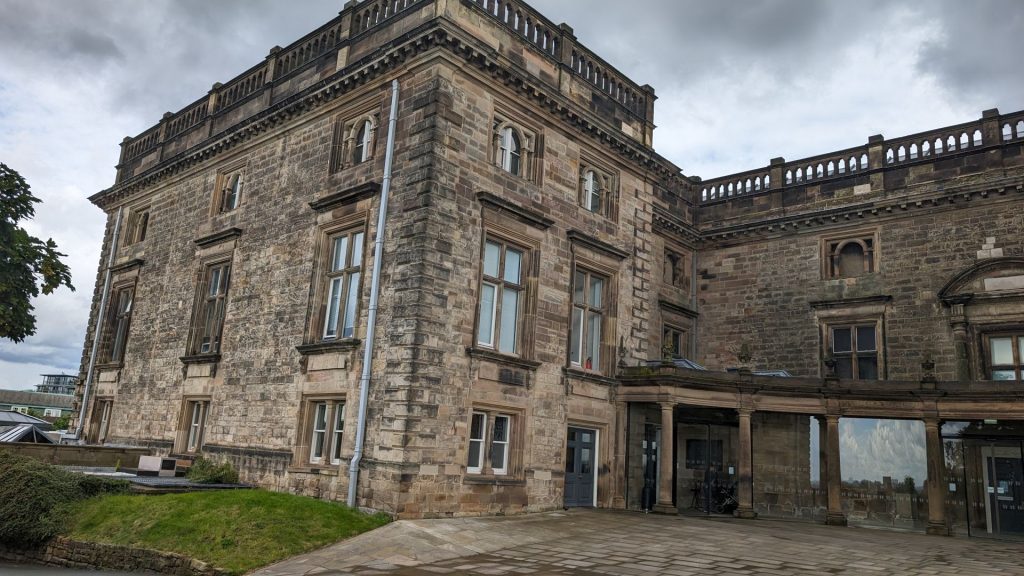
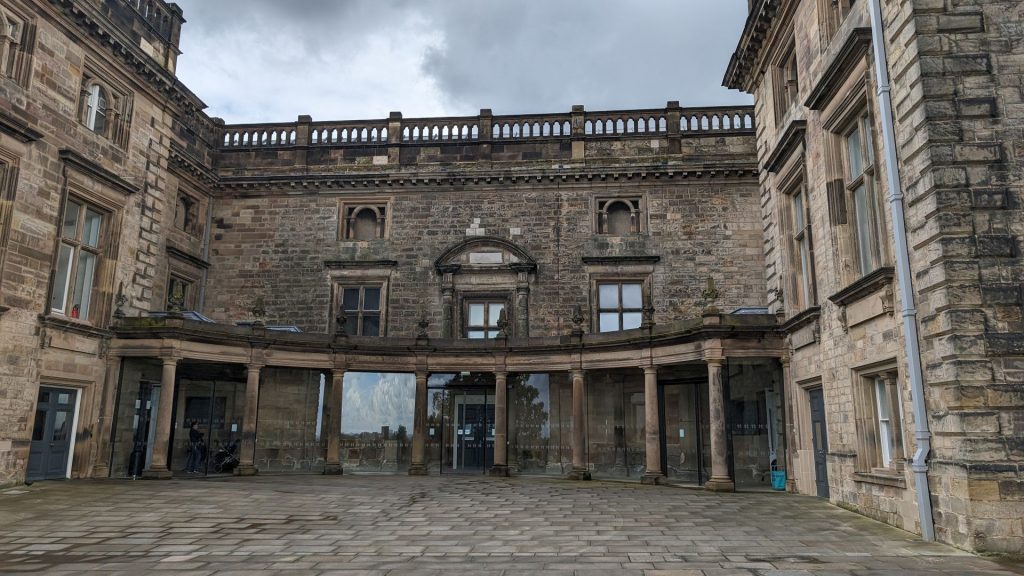
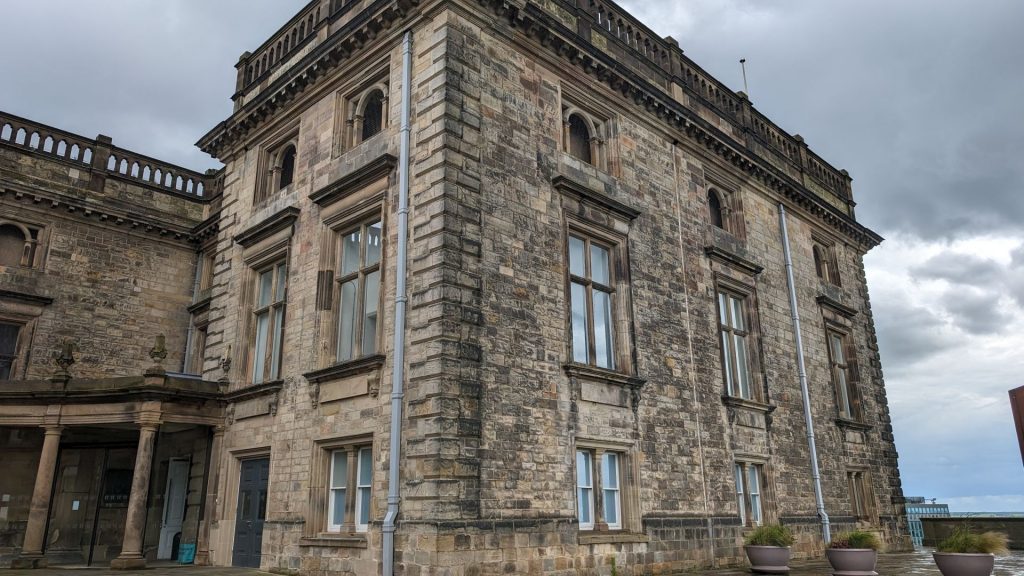
The temporary exhibit on display June to early November is called “Kaleidoscopic Realms” and is an installation of artworks by eight contemporary artists. Here are some photos.
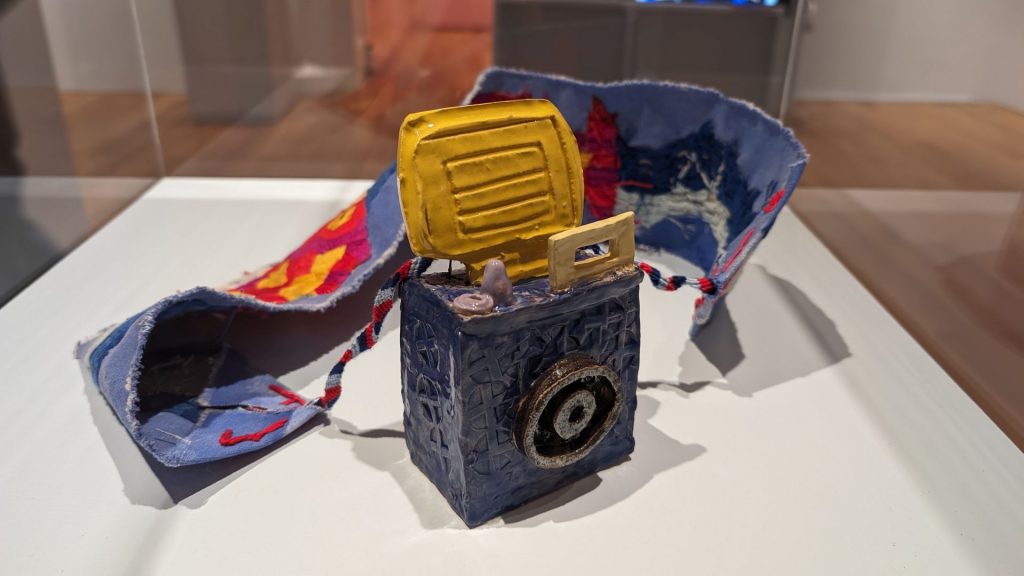

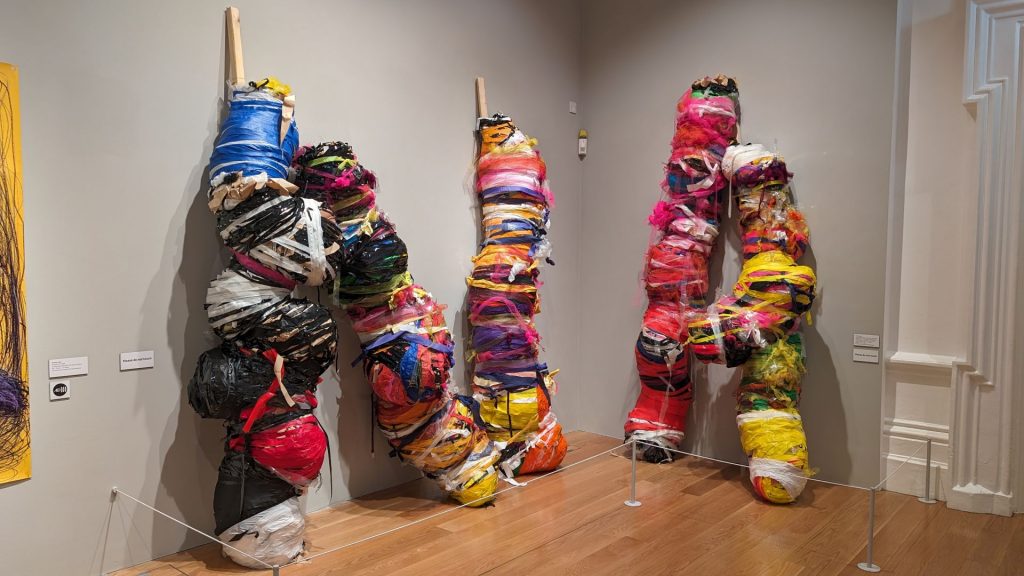
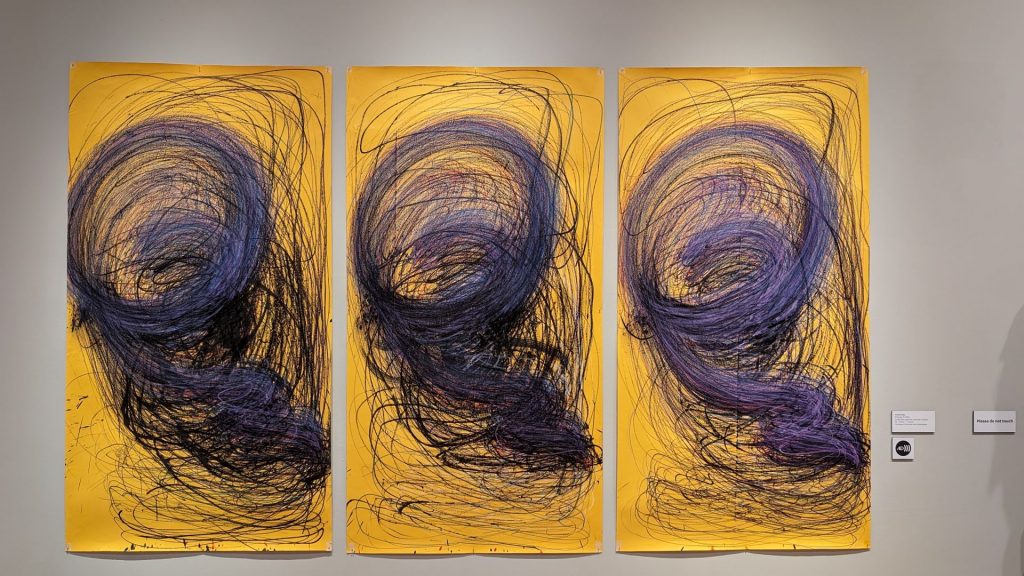
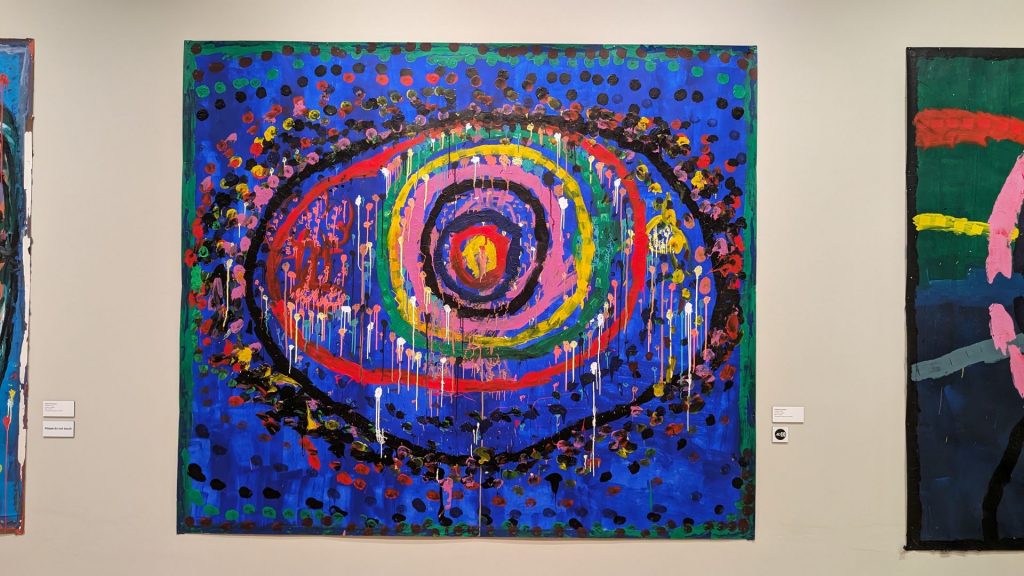

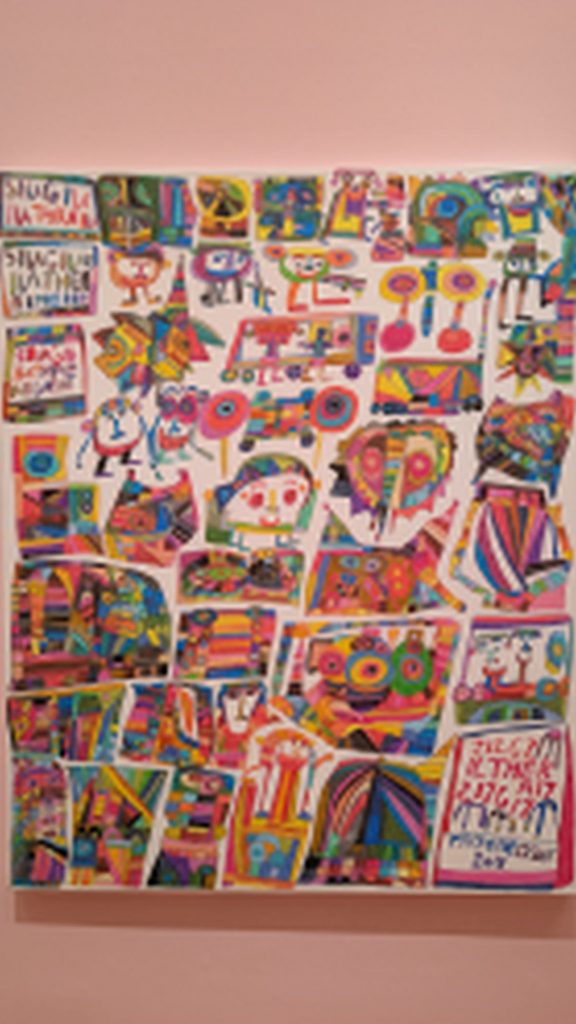
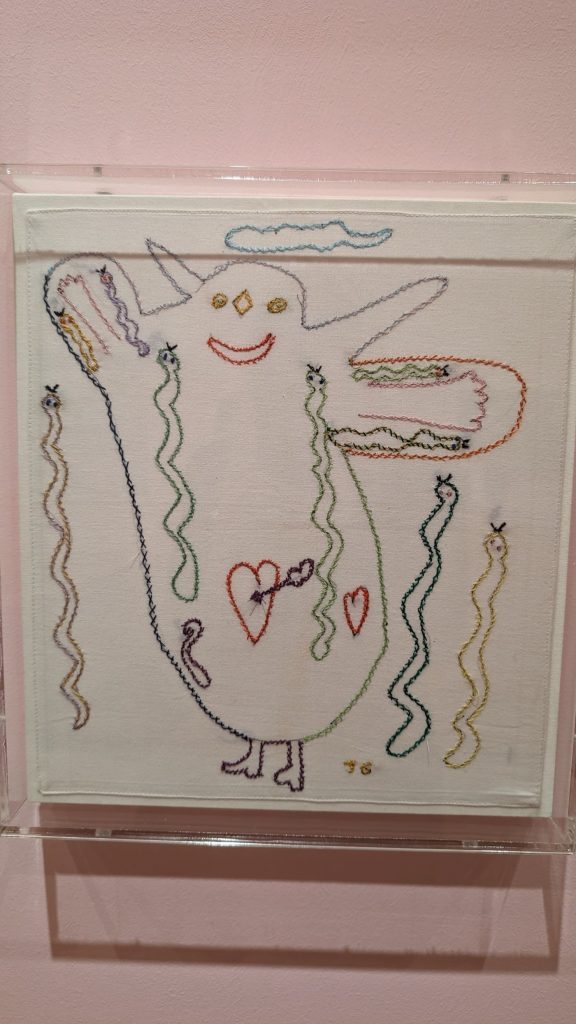
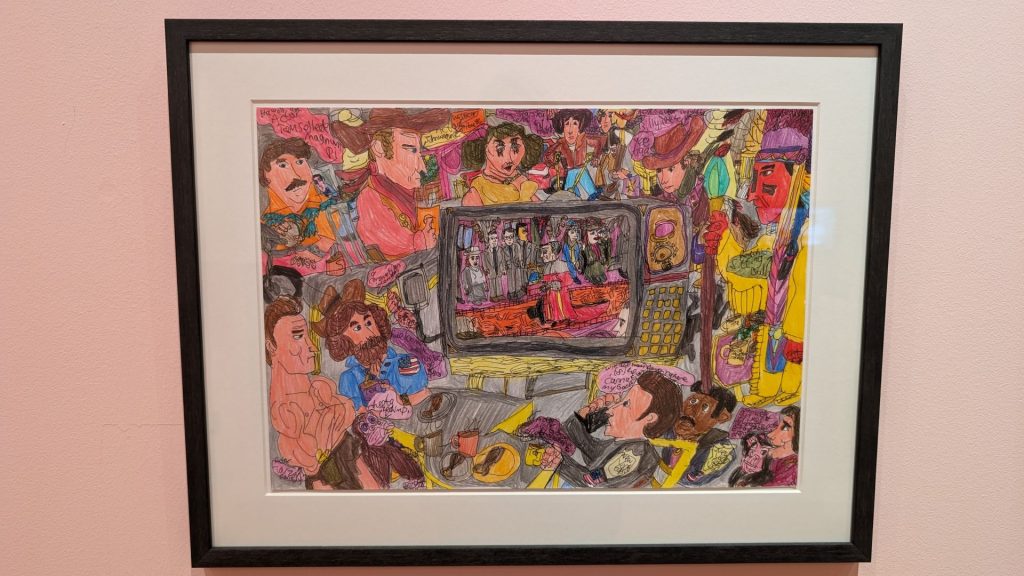
For some reason, I didn’t take a picture of Richard Hunt’s artwork. I apologize, Richard.
There was much more than modern art on display. . . Below are two biblical scenes made from alabaster. Alabasters were powerful storytelling devices for the medieval Church (5th-15th centuries). Carvers used templates or standard designs to create clear and detailed scenes from the Old and New Testaments, often communicating an entire story in just one scene, such as Christ’s crucifixion.
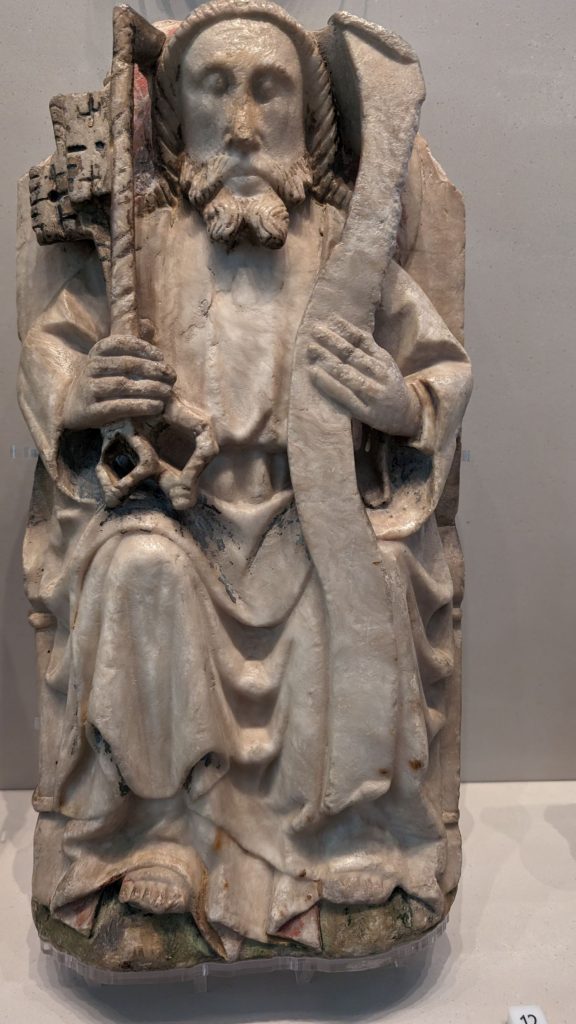
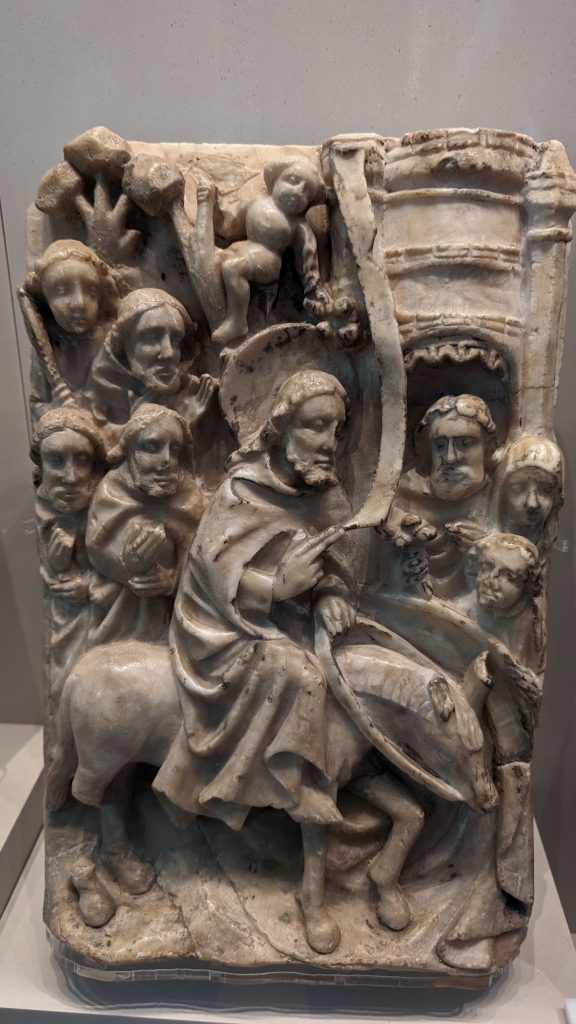
Also on display were salt-glazed novelties. Most famous among them were the Nottingham bears, used as tobacco jars or ale and liquor jugs. They were inspired by the cruel but widespread 18th-century spectator sport of bear baiting, with the bears shown holding a fighting dog.
Each bear was unique, thrown in two halves, with arms, legs, chain links and other features modeled by hand. The fur was formed by grinding once-fired clay into chips.
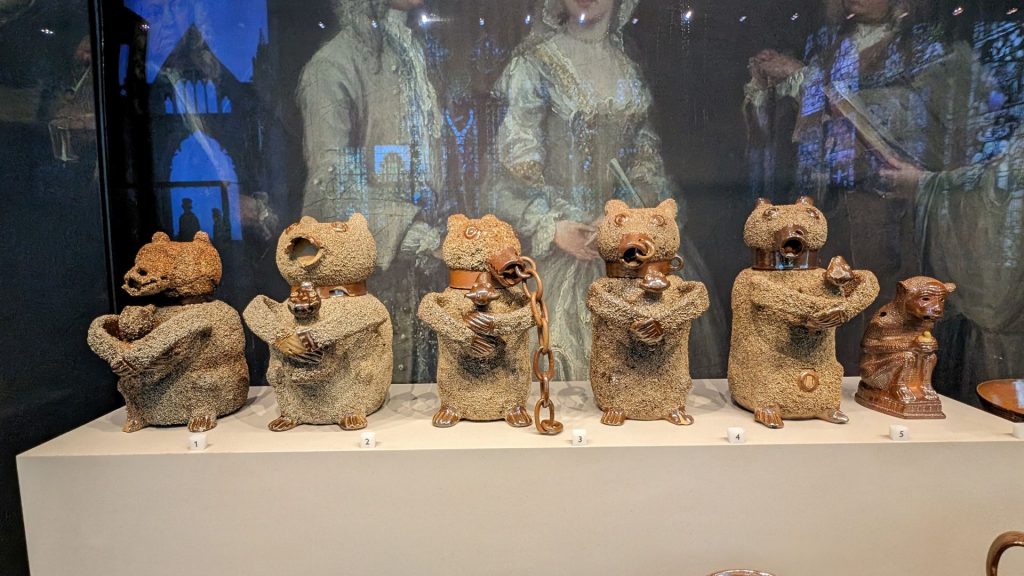
I thought these salt-glazed jugs, pots, cups, and bowls were beautiful:
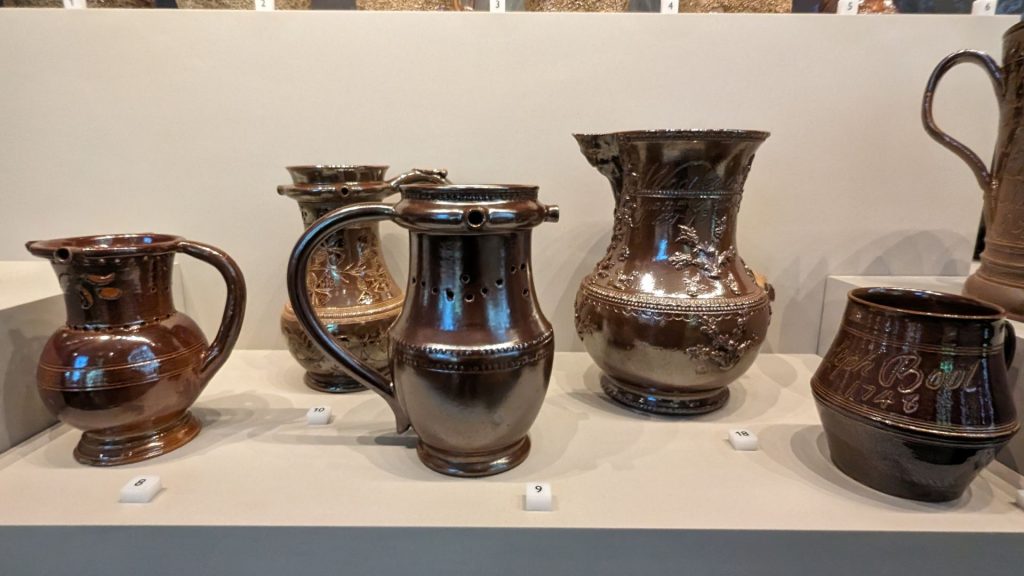
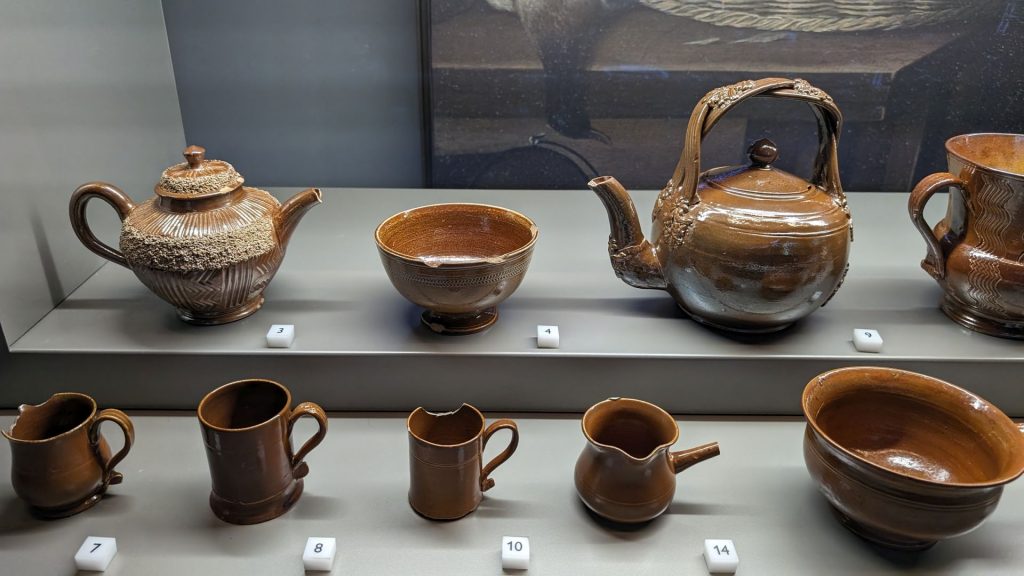
But wait, there’s more! Clothing and lace. For my clothing-loving readers!
Lace became widely available to the expanding middle classes in the 1850s, when the increased production of machine-made lace coincided with the development of the department store. Made to measure “high-fashion” clothes reflected the styles and colors in fashion magazines. Women also created fashionable garments at home, using patterns and sewing machines.
Nottingham lace manufacturers endeavored to replicate handmade lace, seen as a sign of wealth and taste. Dressmakers often combined handmade and machine-made lace trimmings in the same garment.
The purple and black dress pictured below is from 1866-67. It was worn by Lady St Paul of Ewart Park, Northumberland. The black silk machine-made Leavers lace trimmings (imitating Maltese bobbin-made lace) and chenille fringe contrast with the rippling purple silk, dyed with the fashionable new artificial color mauveine.
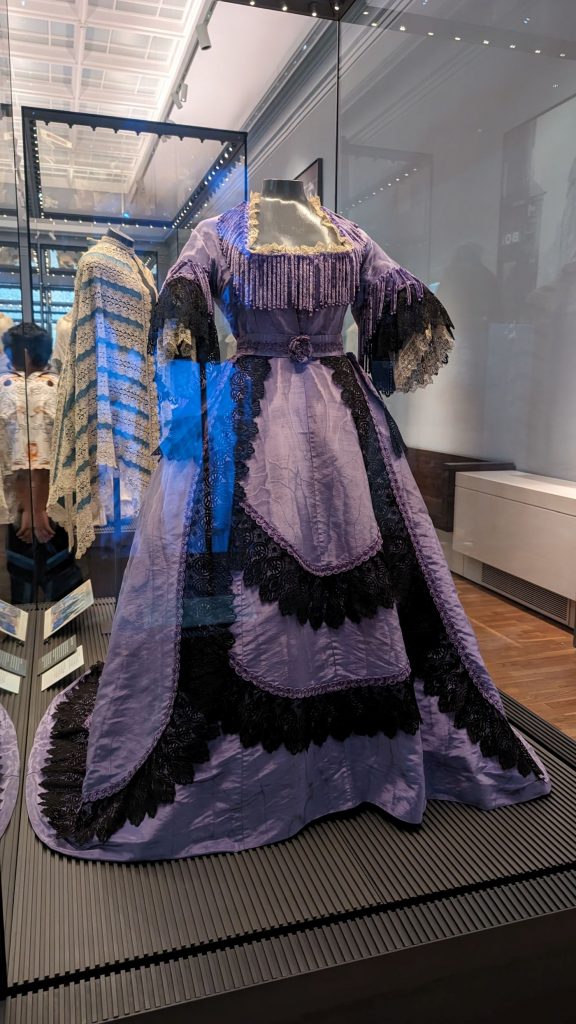
These next three dresses, from left to right are described as follows:
#1: Evening dress, 1925-26. Black silk dress, made of machine-made Leavers lace, with an all-over pattern of stripes with flowers, leaves and geometric shapes.
#2: Dress and sash, 1941-42. Pale pink machine-made “angel skin” Leavers lace over dark brown silk or rayon. The sash is made of matching pale pink silk satin, with a crêpe back.
#3: Evening dress, 1958-62. White and blue nylon lace evening dress, made with the high-speed Raschel warp lace machine. This innovative technology was imported from Germany in the 1950s, when artificial yarns such as nylon were also introduced.
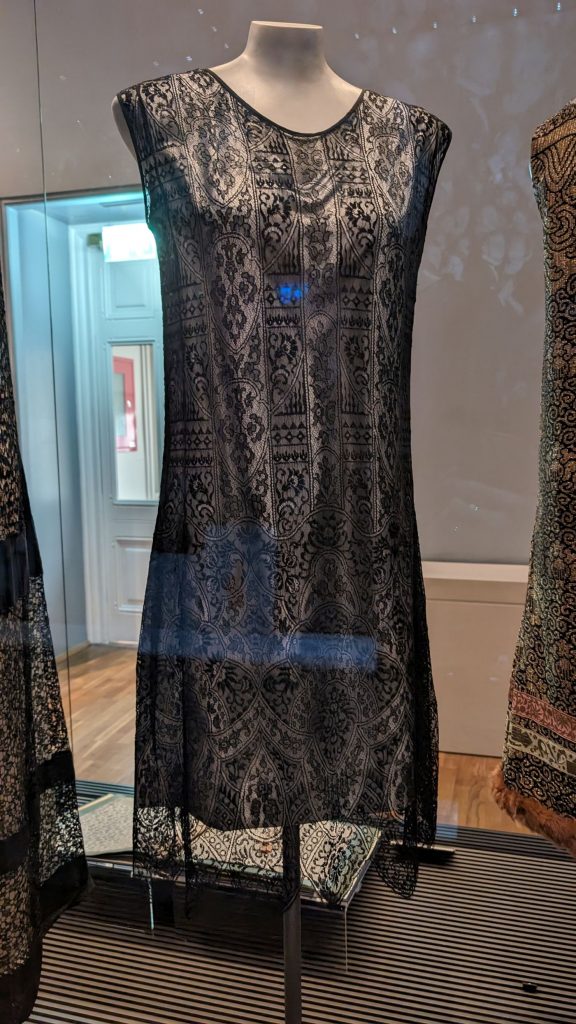
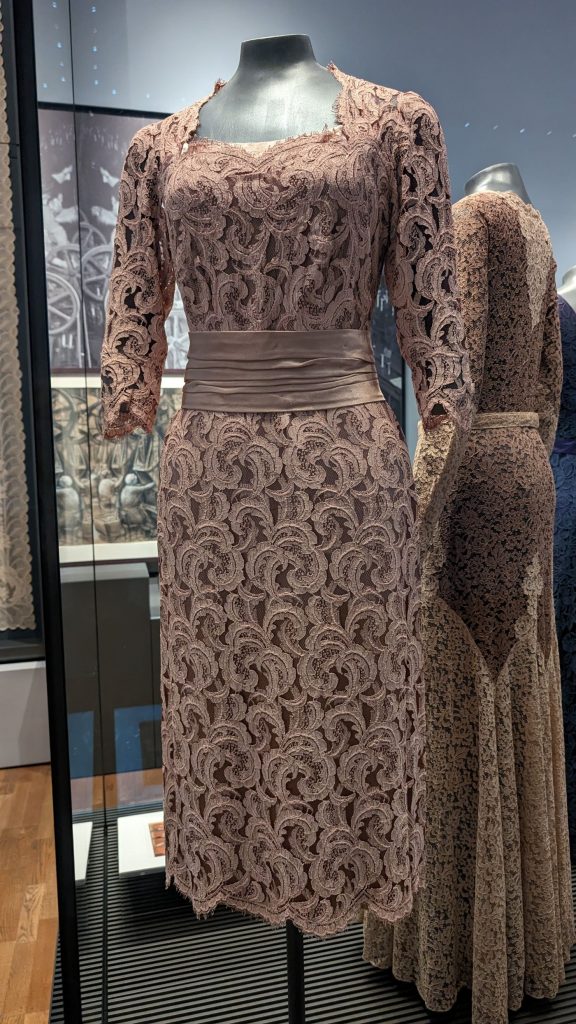
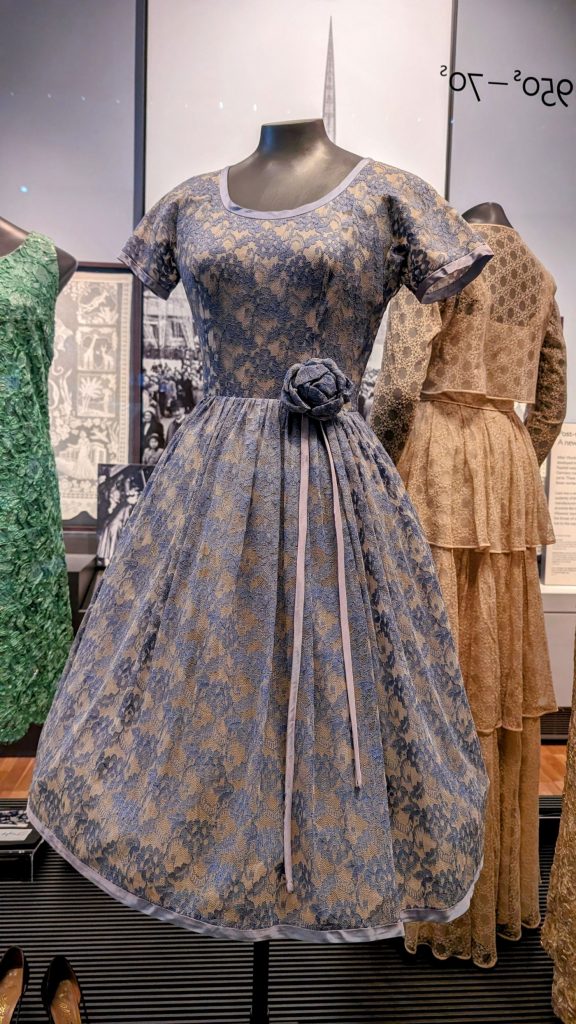
Next on the runway is a wedding dress from 1956. It is an hour-glass silhouette wedding dress, with white cotton and rayon Leavers lace over rayon taffeta. It was given by the managing director of Griffin & Spalding, Long Row, Nottingham to his secretary Mrs. Valerie Hoffmann (nee Wiltshire), for her wedding in Wisconsin, USA.
Um, I am just gonna put this out there: my bosses never gave me anything. 😉
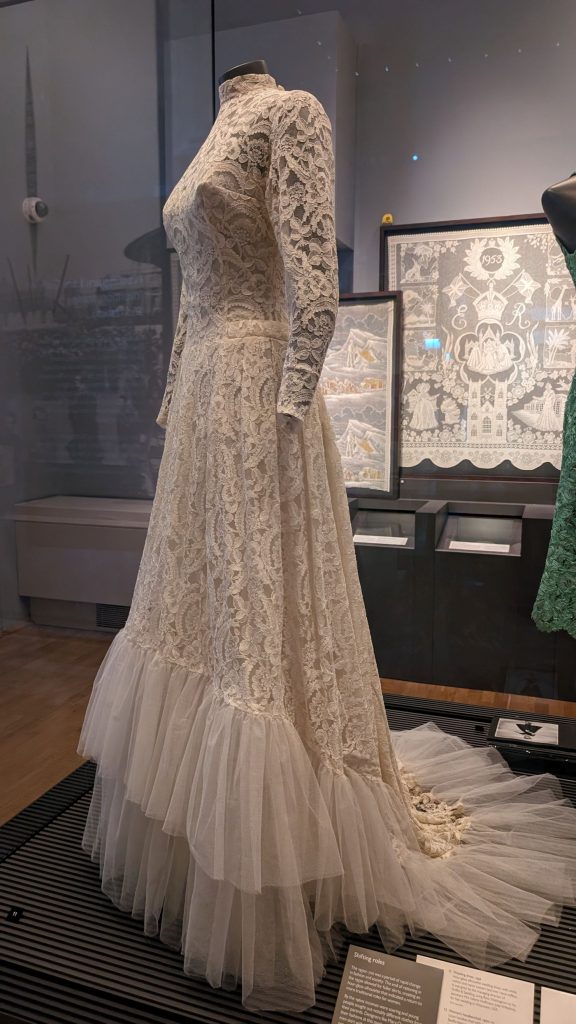
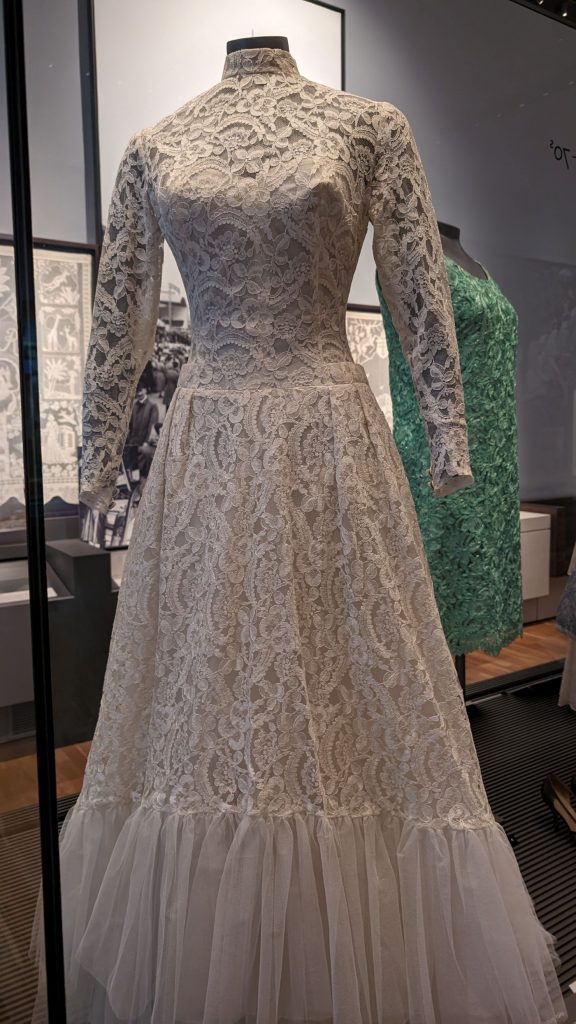
The black dress pictured below is an evening dress, 1903-5, described thusly: Black silk Pusher and Leavers machine-made laces over plain silk and chiffon. The “S-curve” silhouette was created by a corset, pushing the bust forward and hips back, accentuated by the flowing fabric.
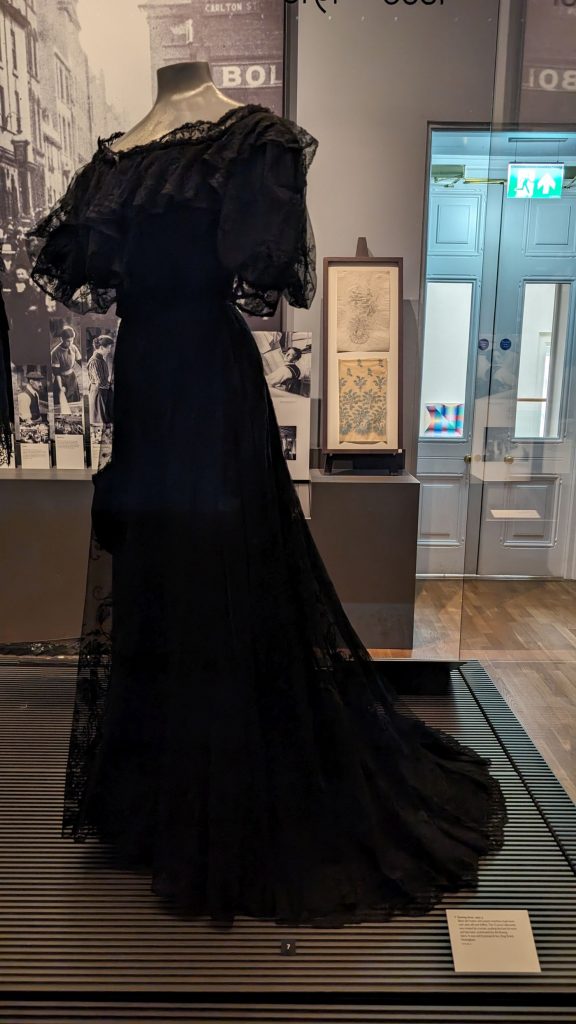
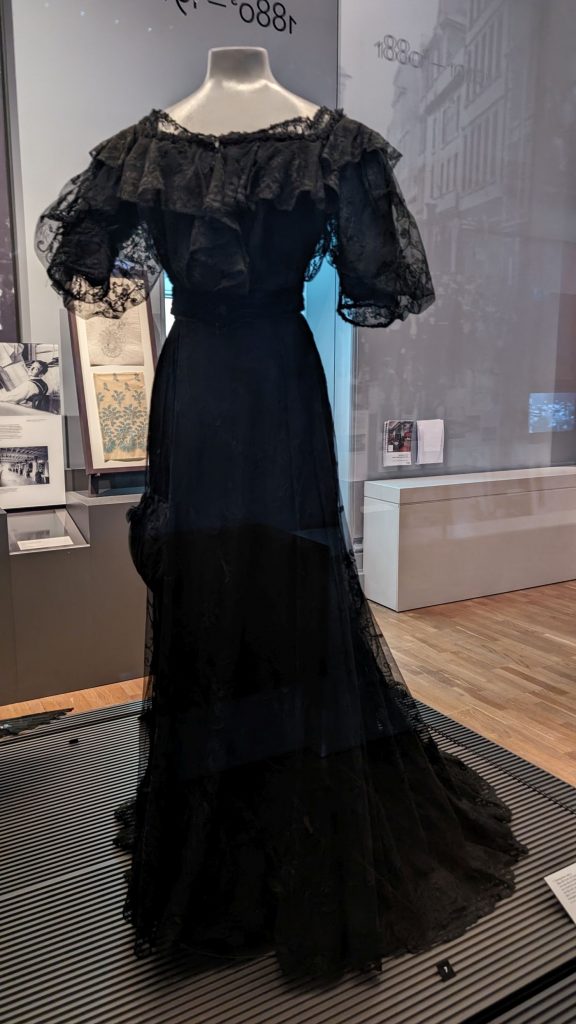
The last dress I will show you is another wedding dress, but a bit different than what one might expect.
Wedding dress, 1879: Blue and pink shot silk wedding dress, trimmed with Leavers Duchesse lace, worn by Lucy Alice Parncutt. Colored, rather than white, wedding dresses could be worn as a best dress afterwards. This makes a lot of sense to me!!
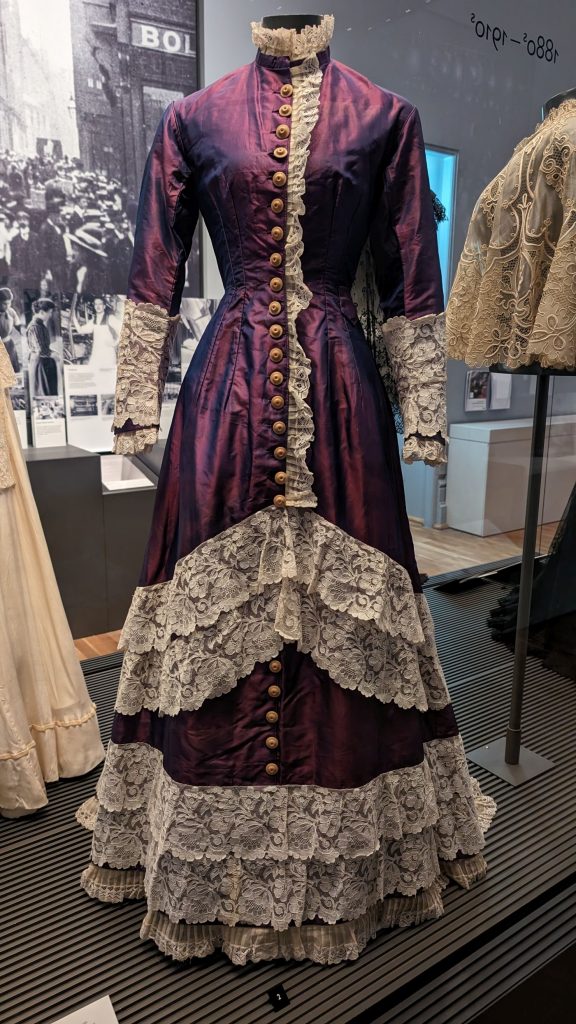
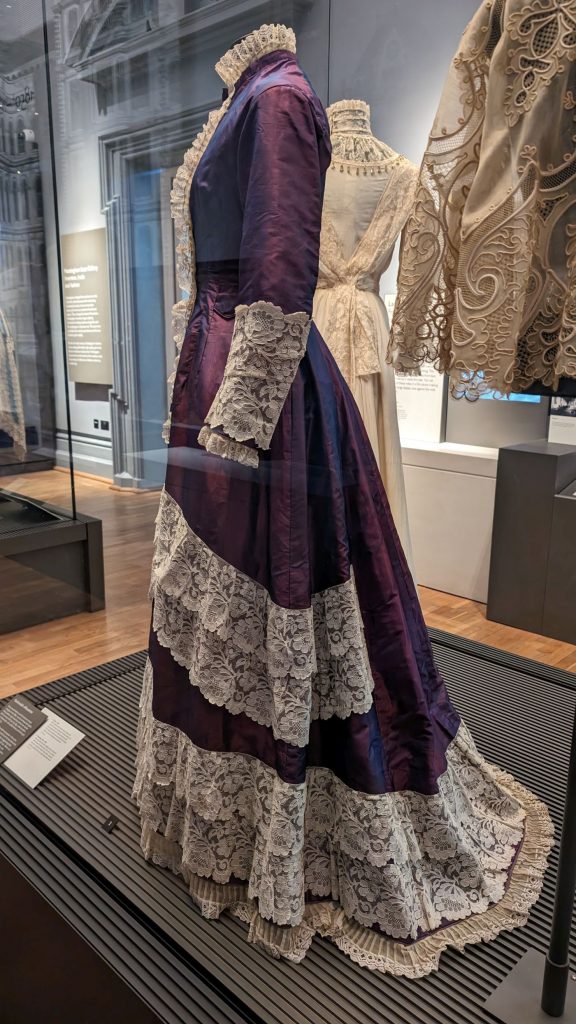
Then we found ourselves in another room filled with a variety of objects.
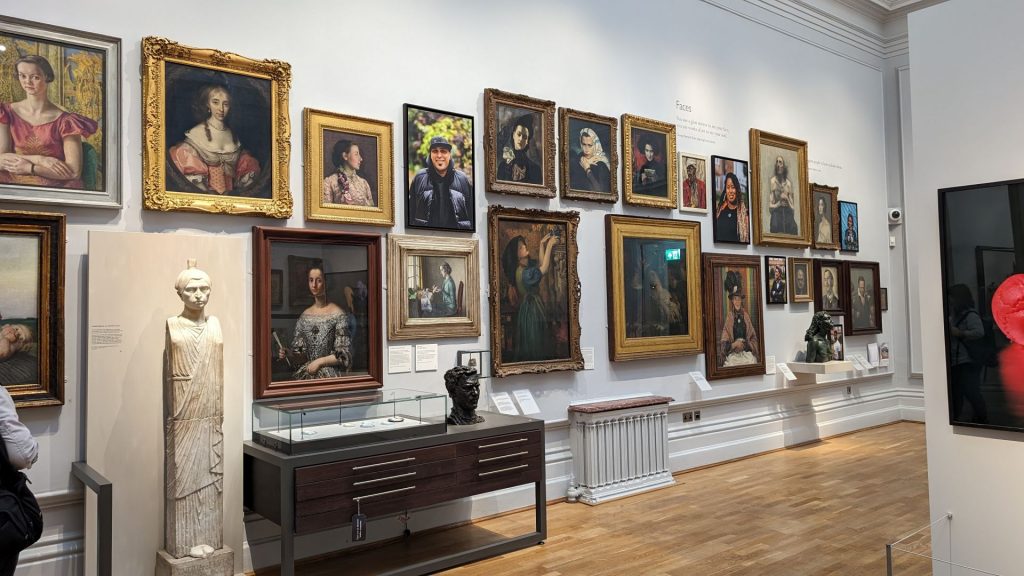
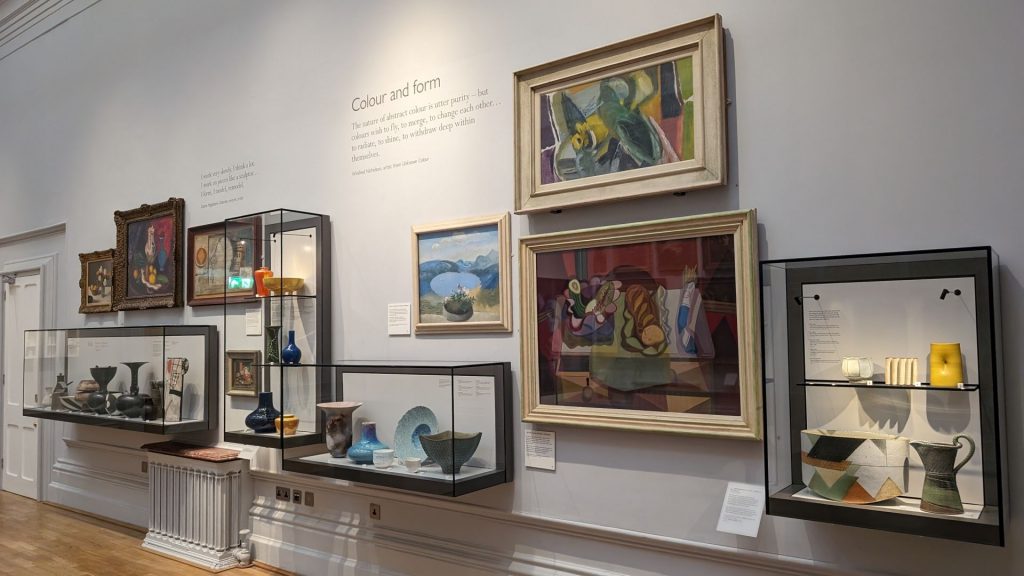
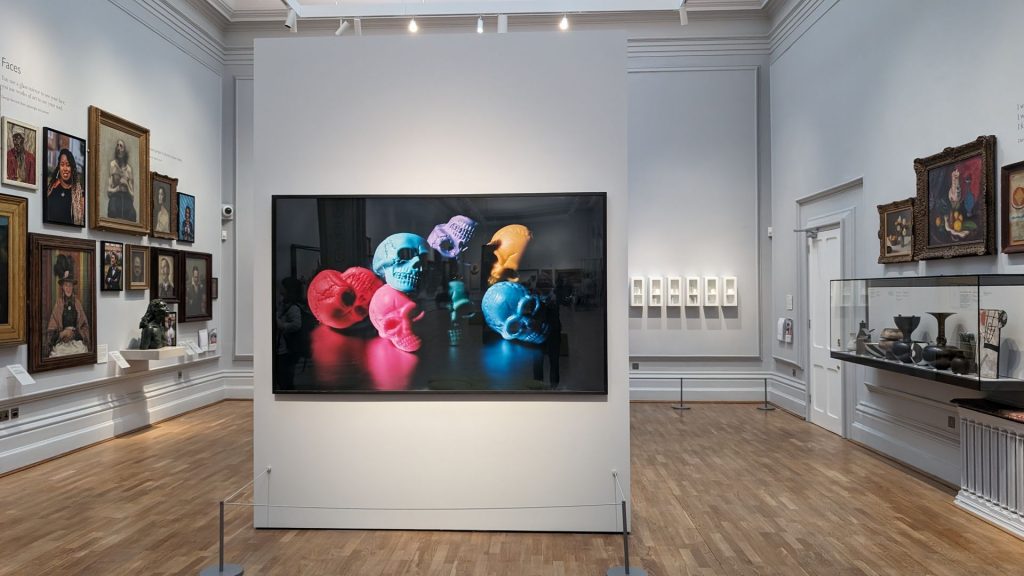
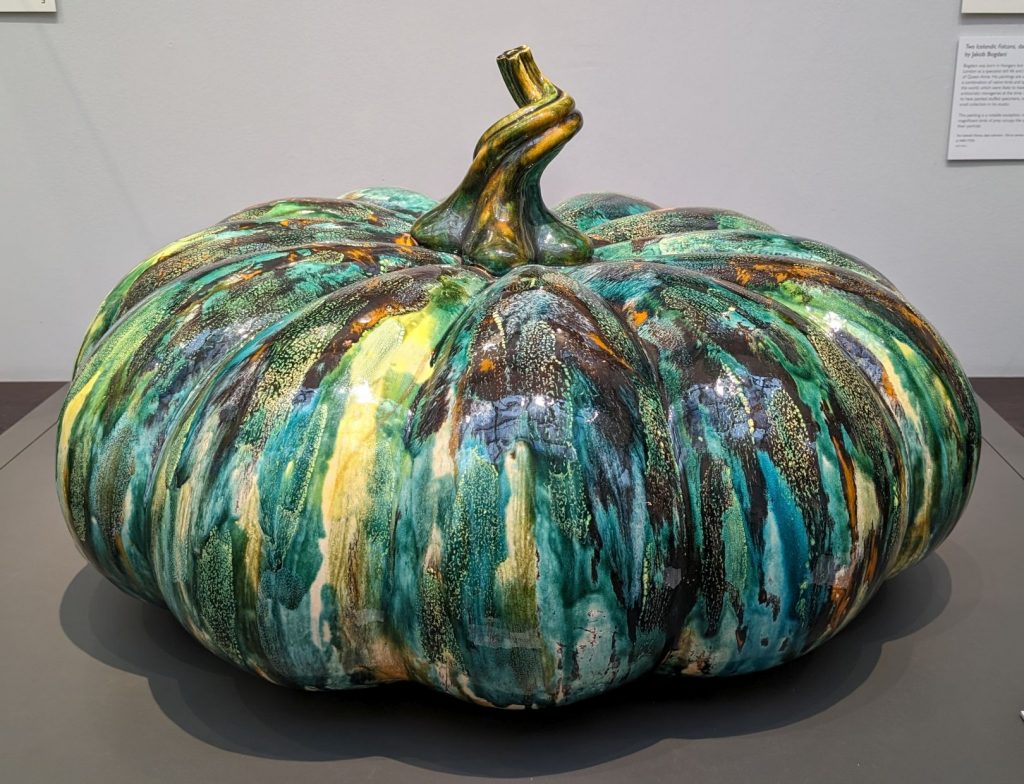
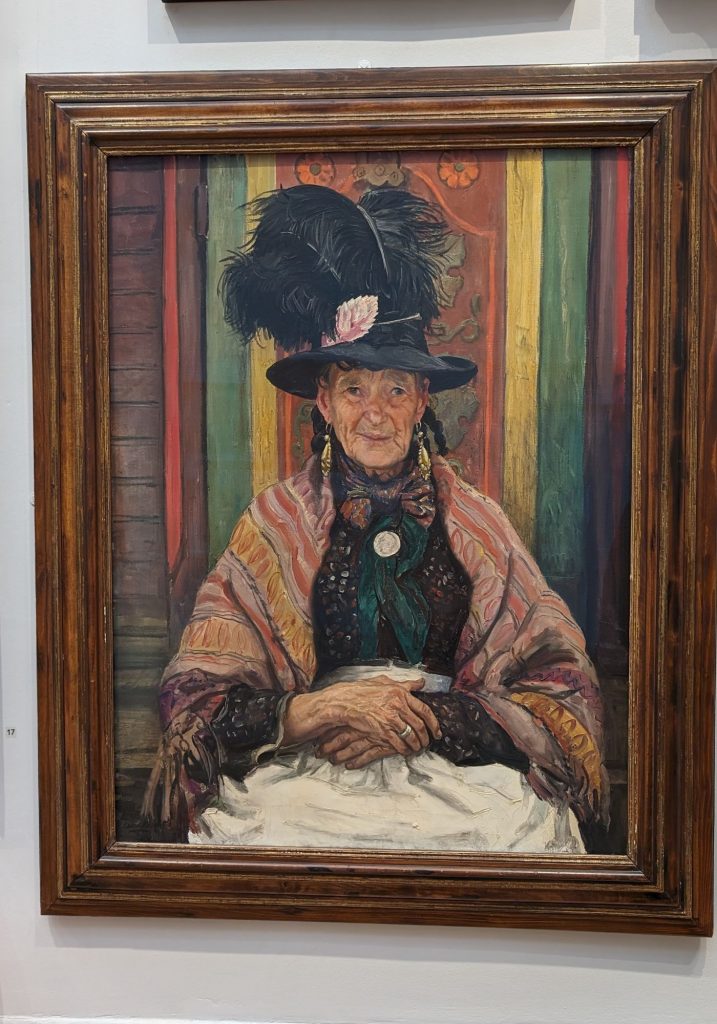
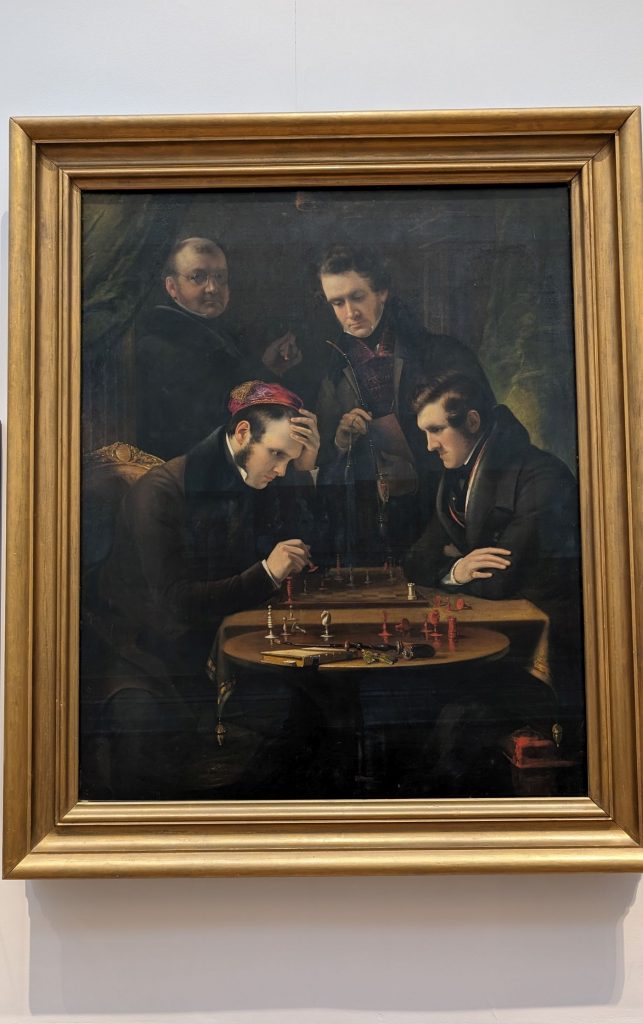
The chess piece pictured below is a white knight from a white and ivory chess set carved in Canton [Guangzhou], China. 1800-1830.
The piece on the right below is Olia. C-Print by Gillian Wearing. “Olia” is a portrait of a fashion model whose identity is hidden behind a specially cast mask of her face and torso. She appears to be part human part mannequin and it is difficult to decipher what is flesh and what is artifice. Though she is not actually naked, as she first appears to be, Wearing’s image manages to reveal the vulnerability of her subject.
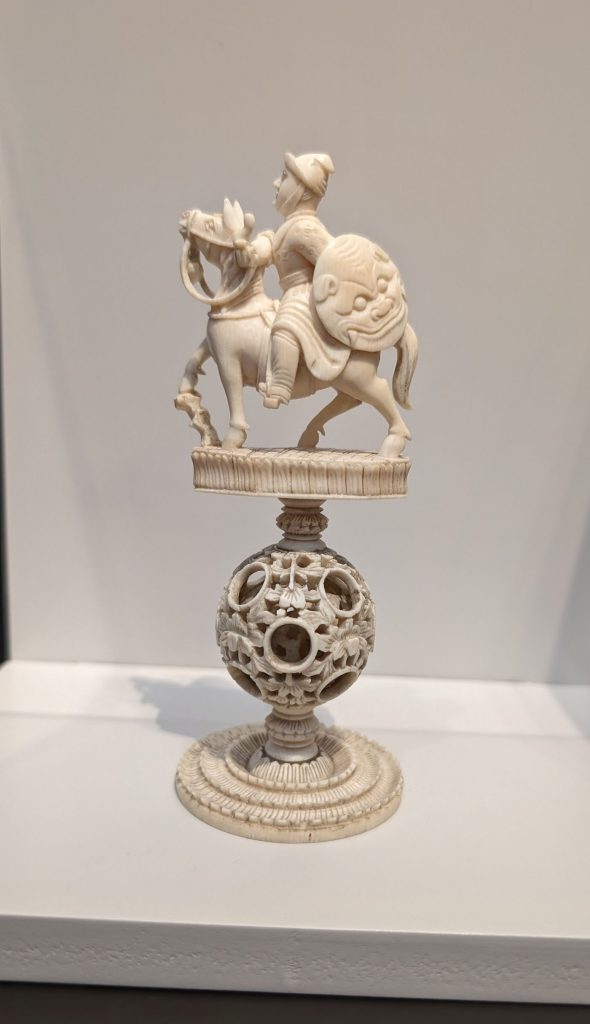
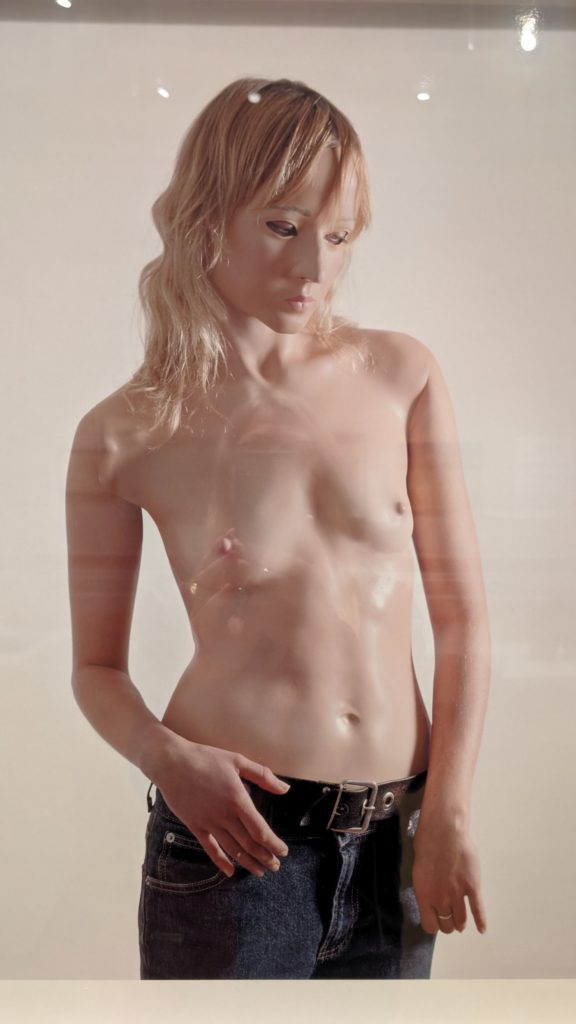
One of the most popular oil paintings in Nottingham City Museums’ collection is “In Love.” It was brought back to the Castle by popular demand. The artist, Marcus Stone, often sets his paintings in an earlier age. This picture is described as such:
In an idyllic sunlit garden, a young couple sit either side of a table in the shade of an apple tree. They might be characters from a Jane Austen novel, poised on the verge of romance. The man has set aside his portfolio of drawings to gaze at the women — was he just sketching her just moments before? The woman’s eyes are lowered demurely to her needlework, whilst a statue of Eros, the Greek god of love watches over them. Everything around them is in full bloom, from the lush bunch of flowers by the woman’s side, to the rosy apples.
Despite the tranquil beauty of their surroundings, there is an undercurrent of suppressed emotion between the couple, emphasized by the young man’s restless post. Have they argued? Do they feel desire, boredom or, as the artist Marcus Stone said, are they at that moment in the early stages of a relationship when they are “. . .neither quite sure of the other?”
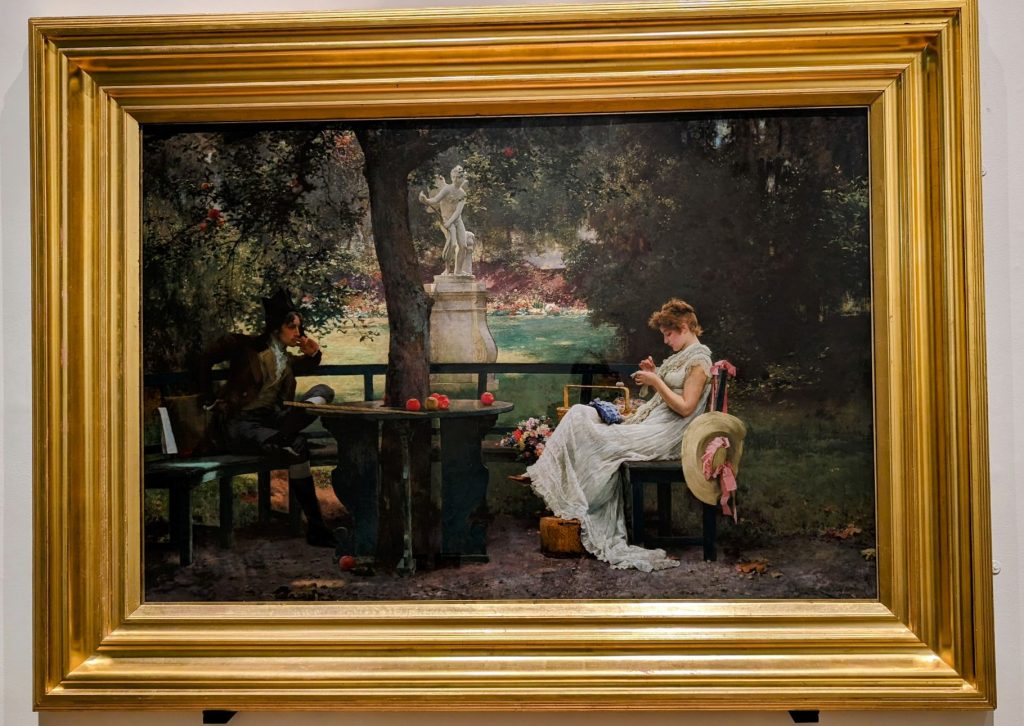
That’s it for the castle. It was time to visit the tunnels beneath the castle. I should note that there is an entire city of caves underneath Nottingham. We did not visit it. I wish we had. But it was fun to see the tunnels, and the guide shared a lot of interesting history and stories!
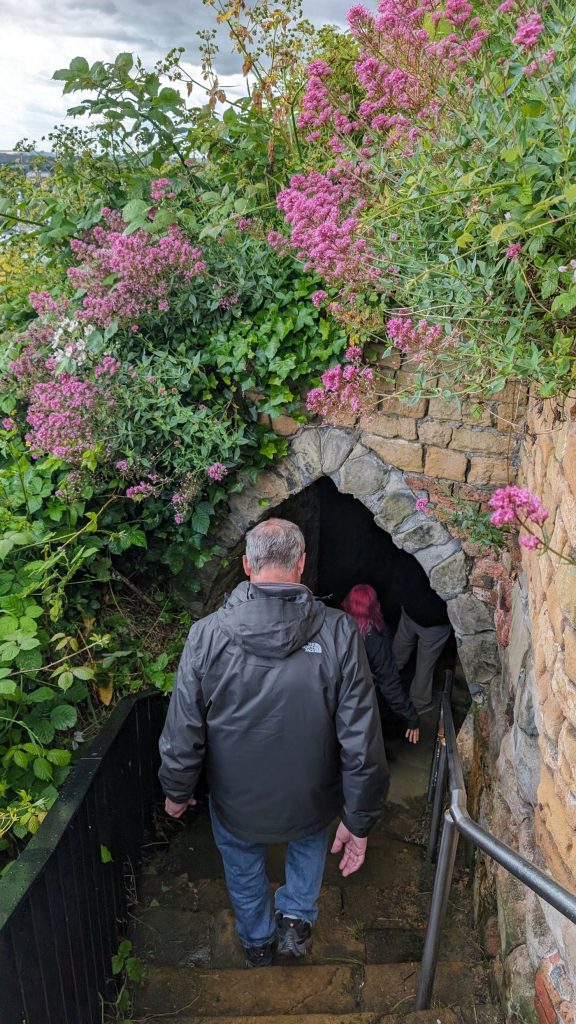
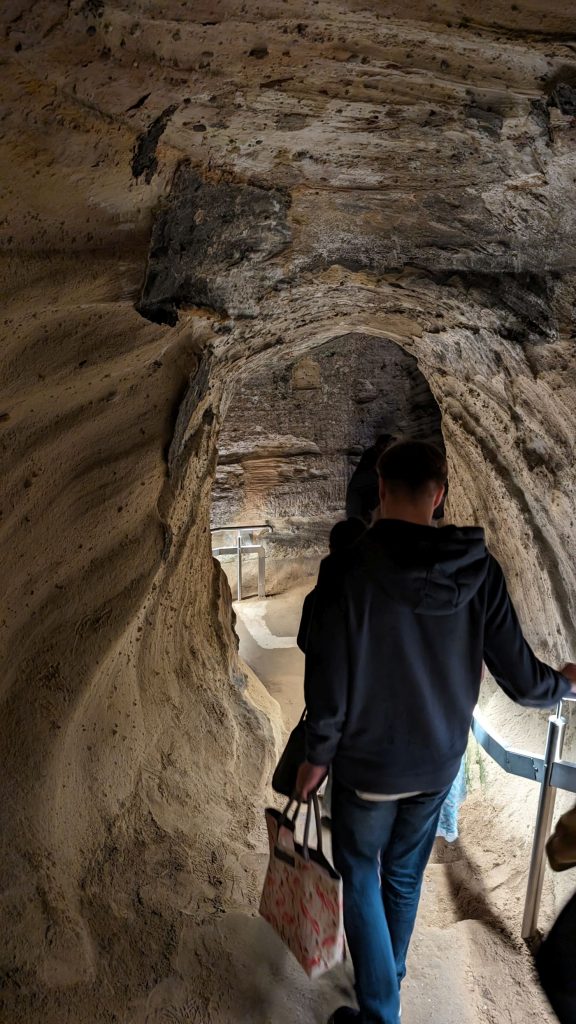
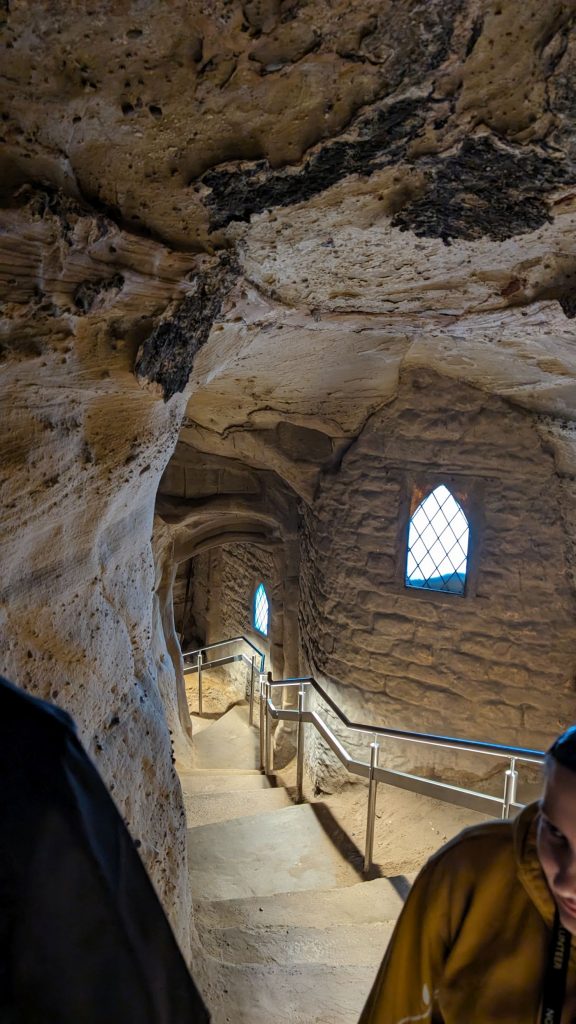
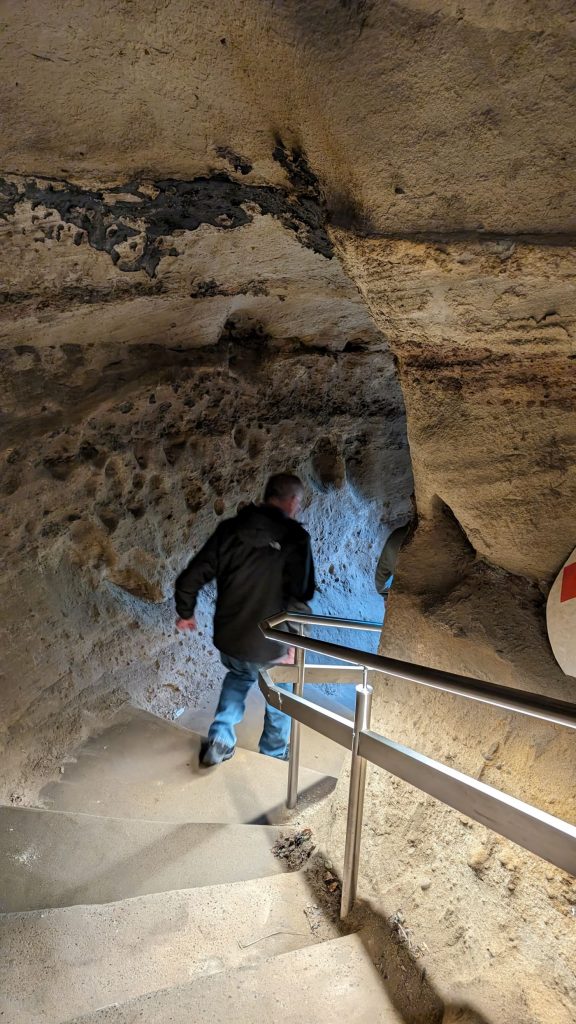
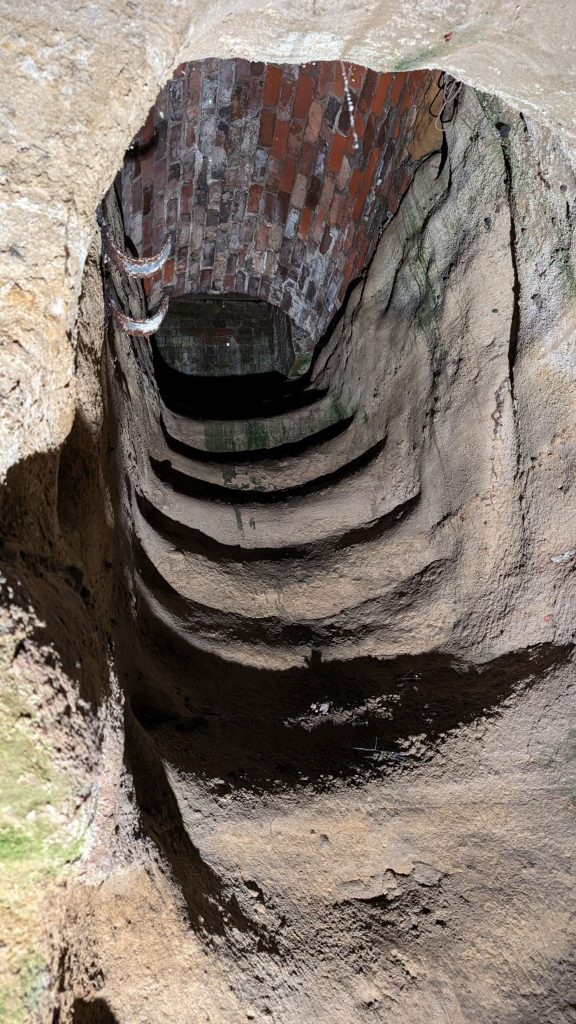
We exited the castle museum and art gallery and walked a few meters to Ye Olde Trip to Jerusalem. Reportedly the oldest pub in the country, this historic gem is carved into the cliff on which Nottingham Castle stands and is packed with historic images, artifacts and curiosities. It is a fun place to stop for a pint and a bite.
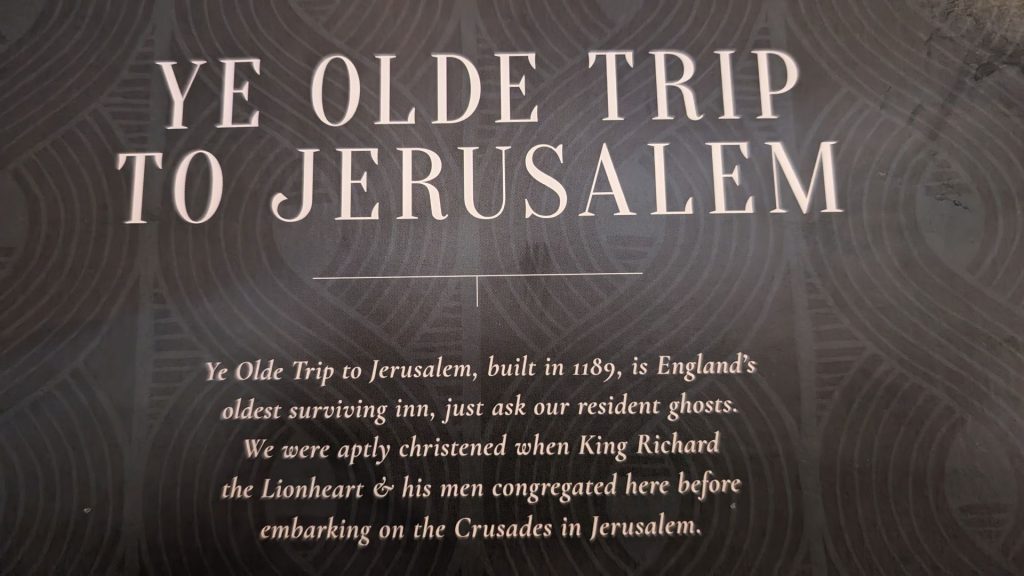
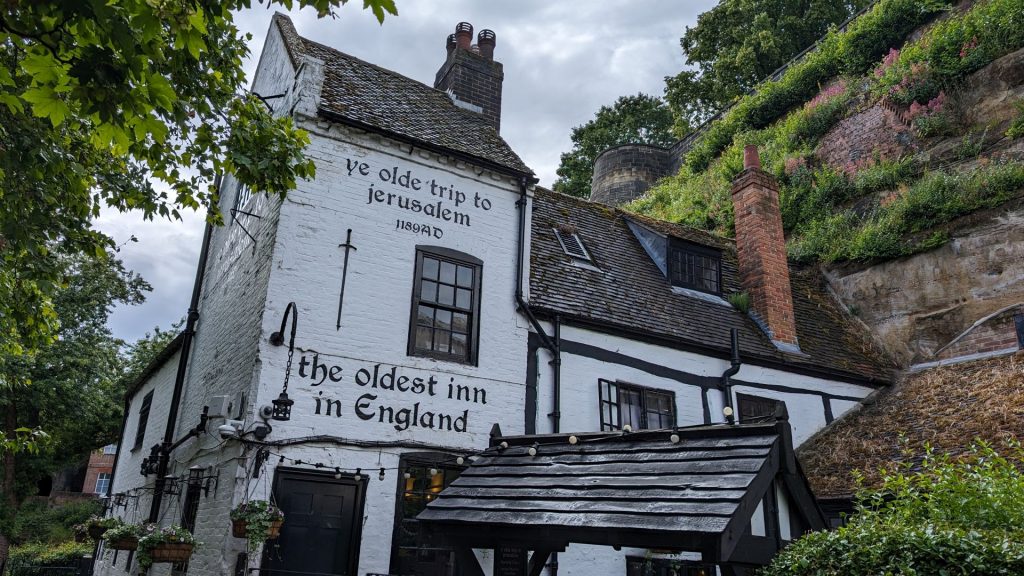
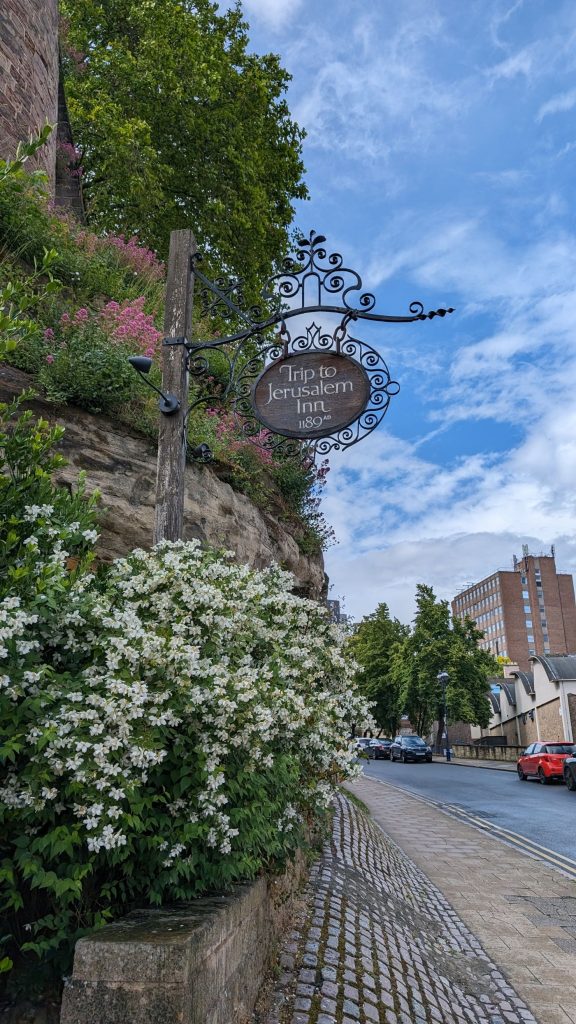
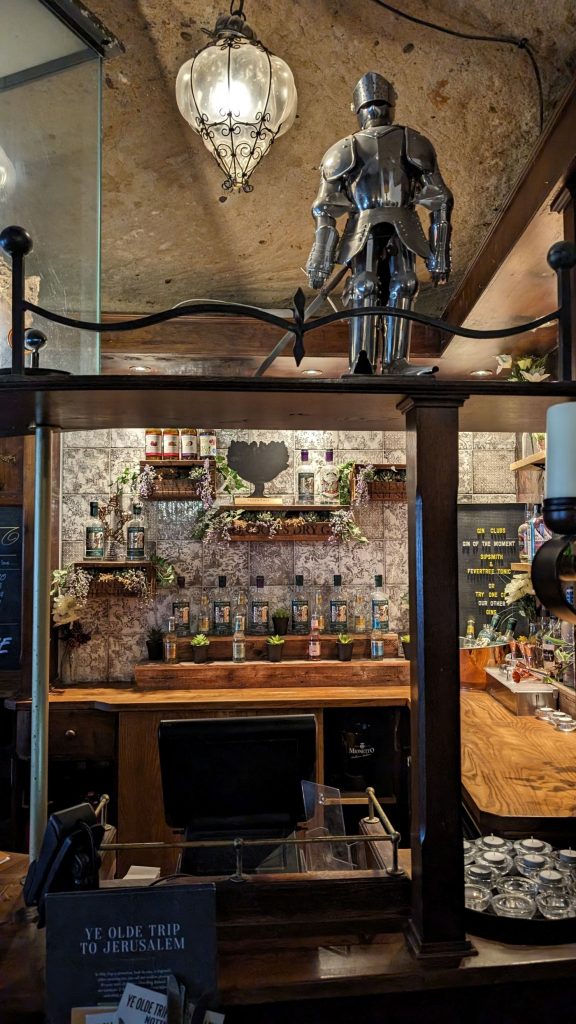
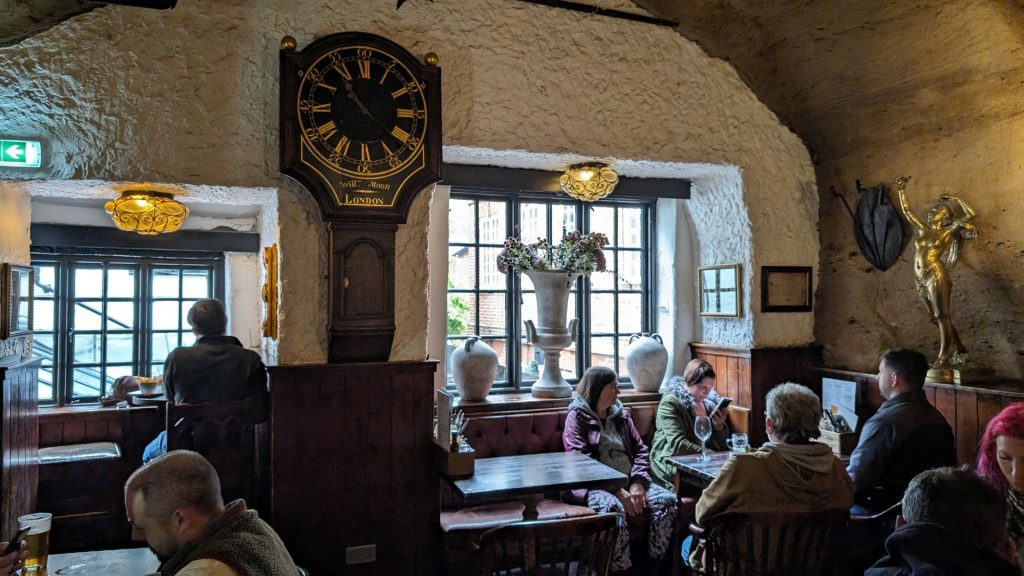
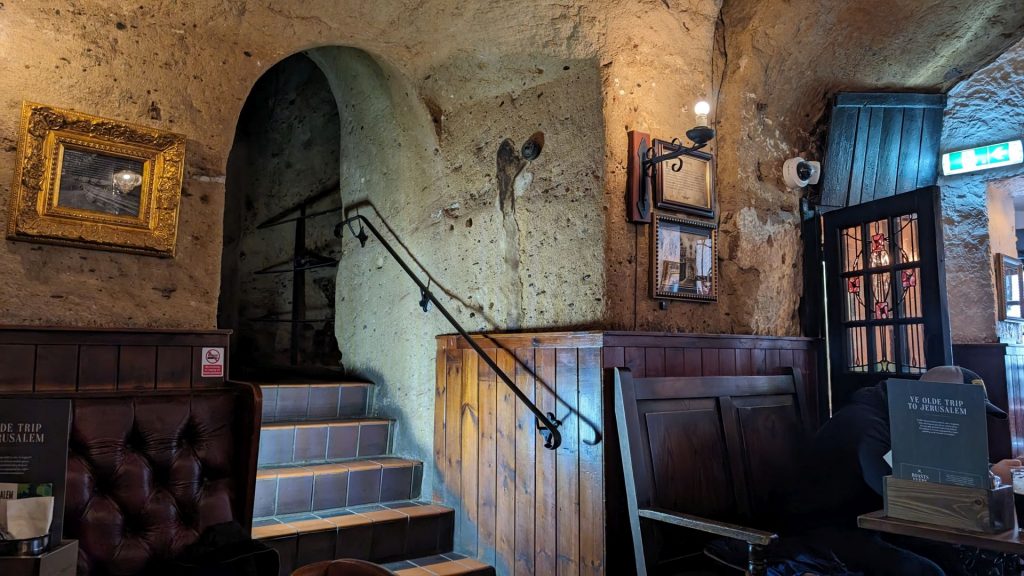
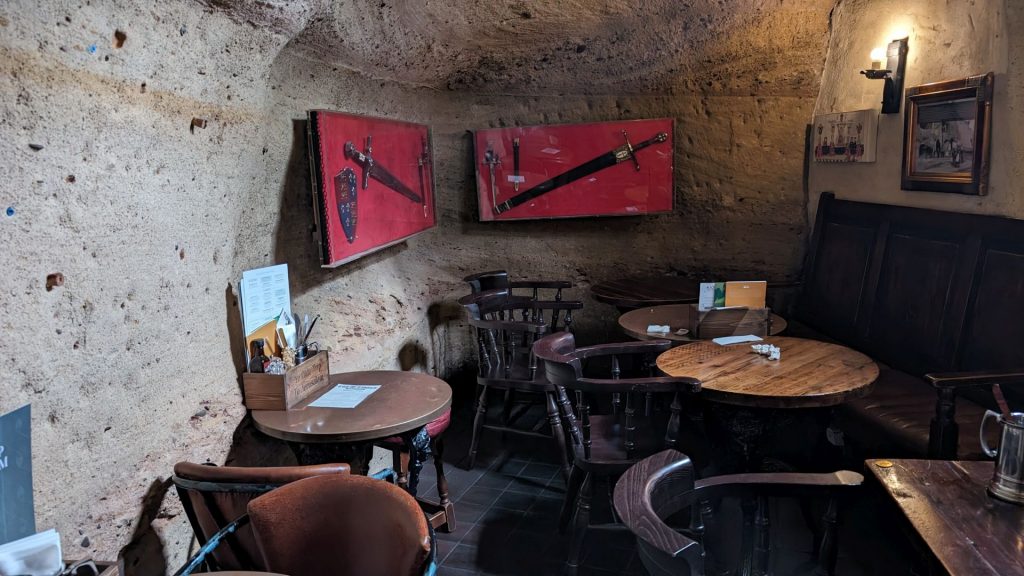
We saw a statue of Robin Hood on the way back to the car. No visit to Nottingham would be complete without that!
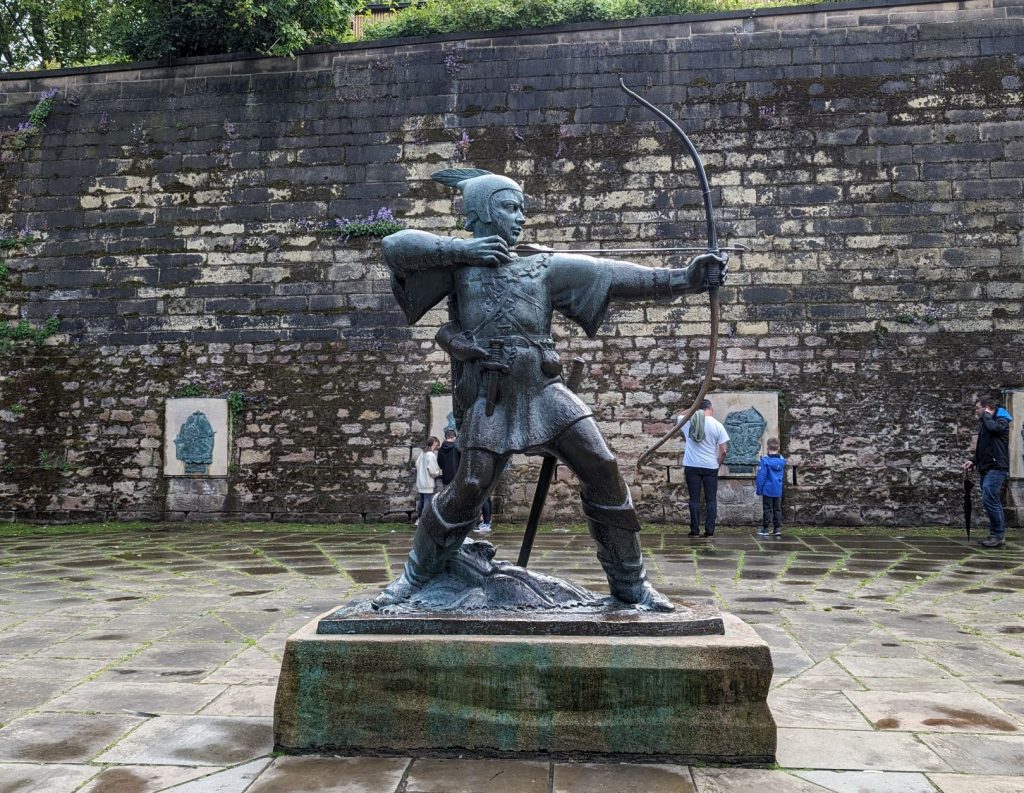
Our visit to Nottingham was very short. We drove to our hotel in northern Wales that same day (about a three-hour drive). Headlands Hotel was lovely and had a great view.
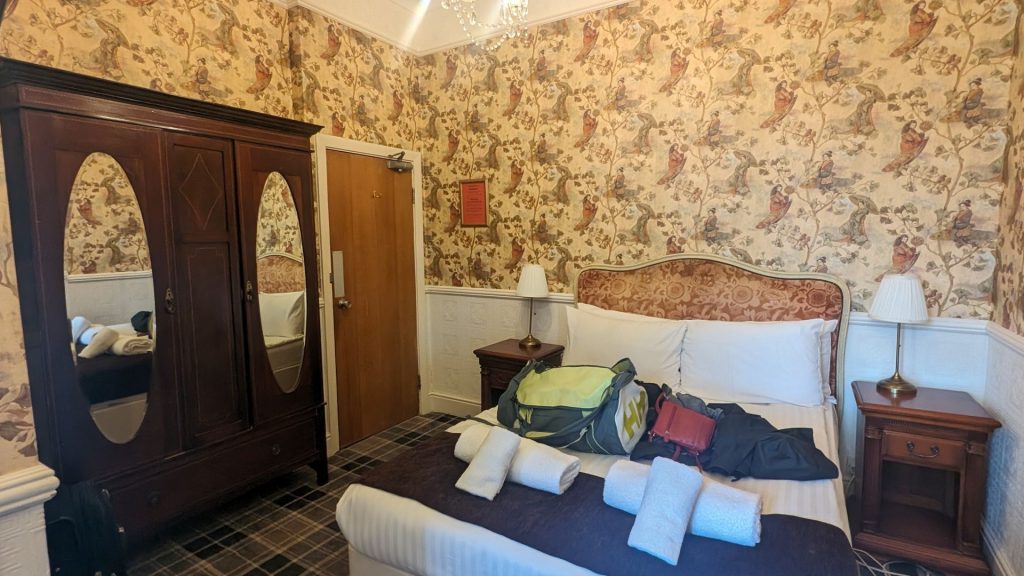
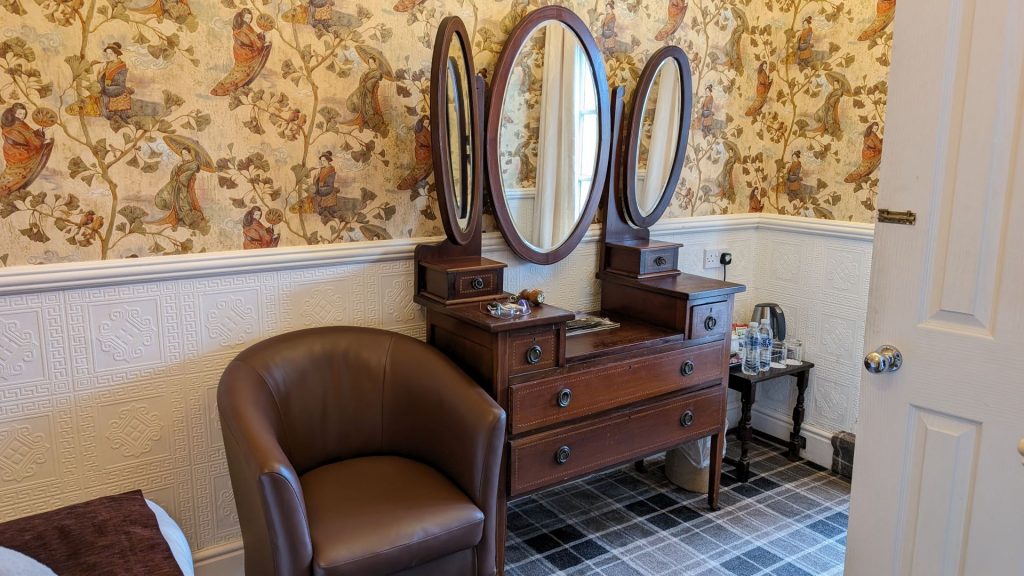
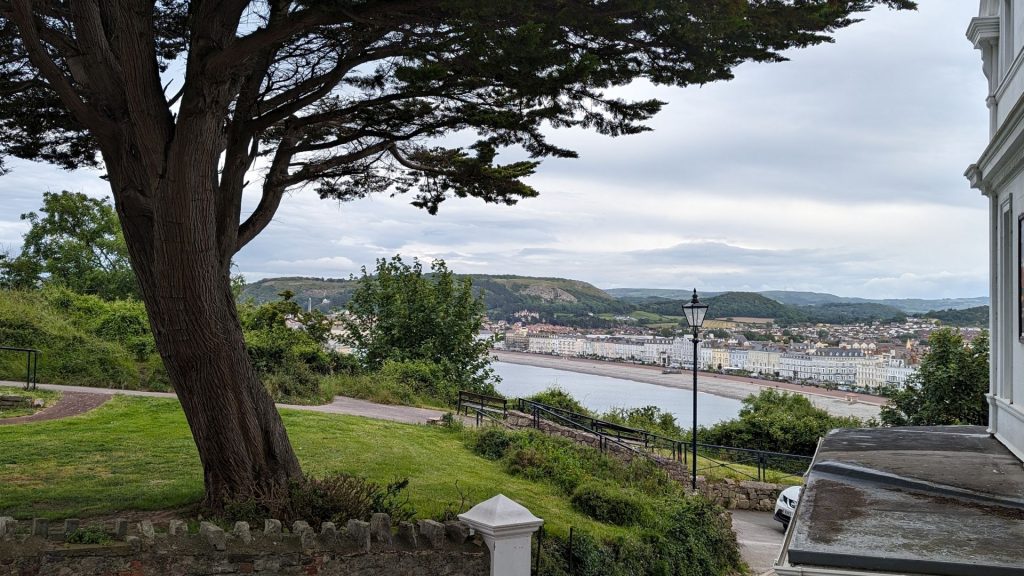
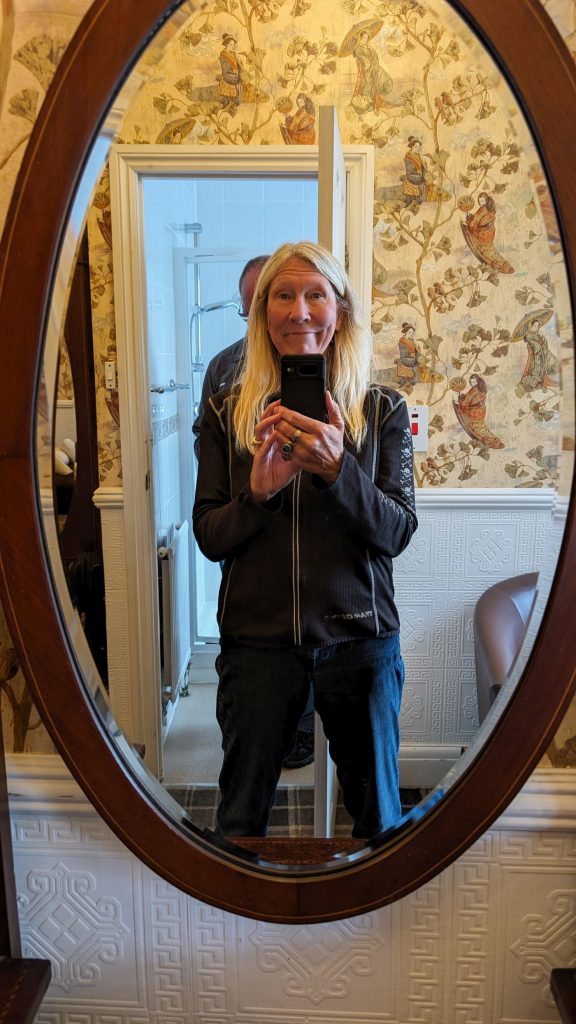
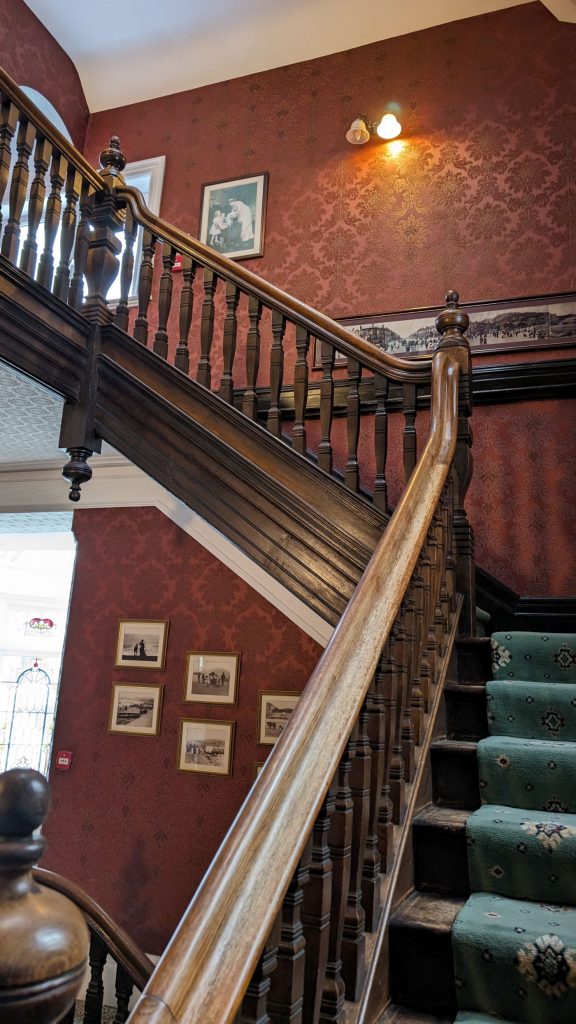
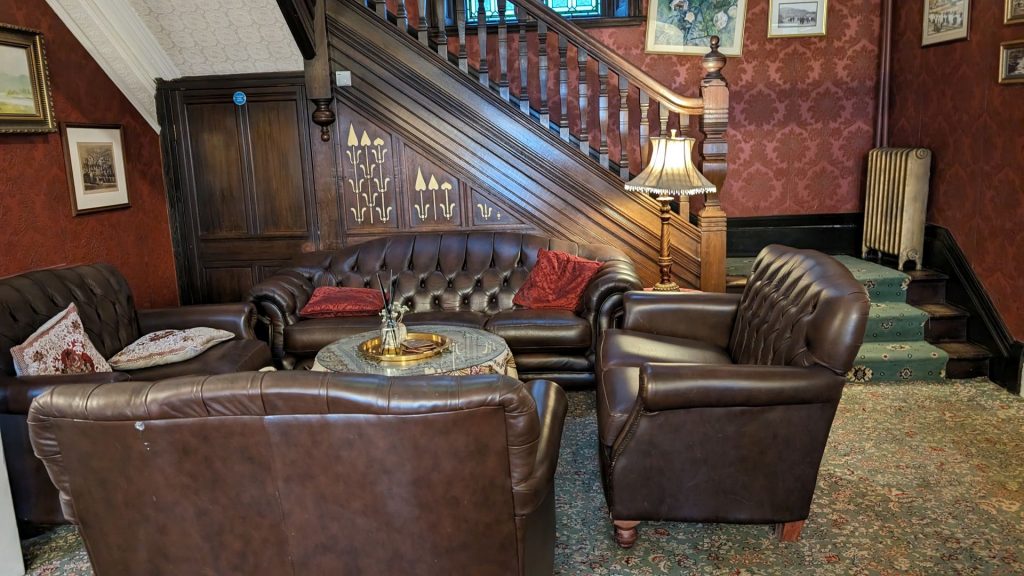
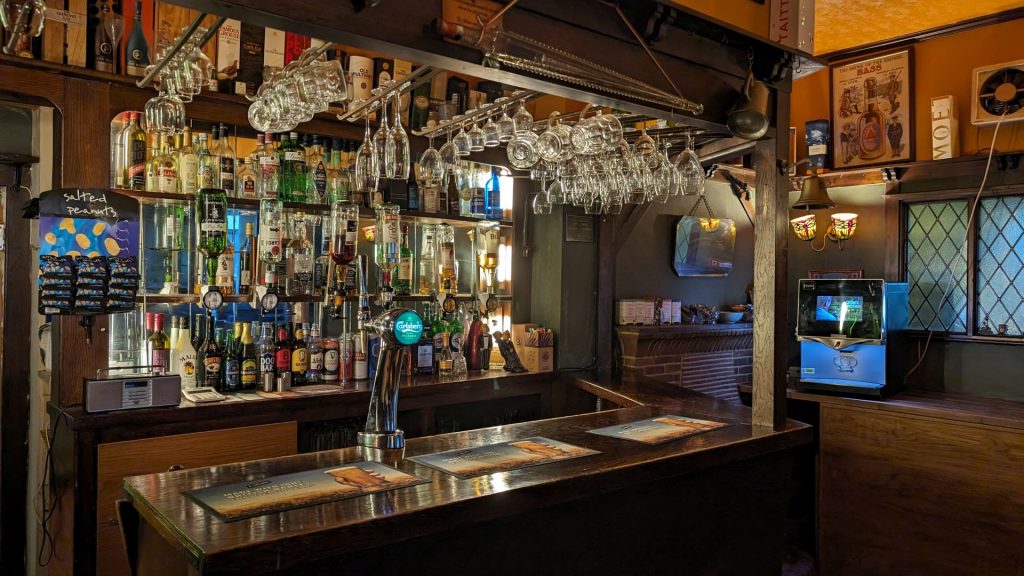
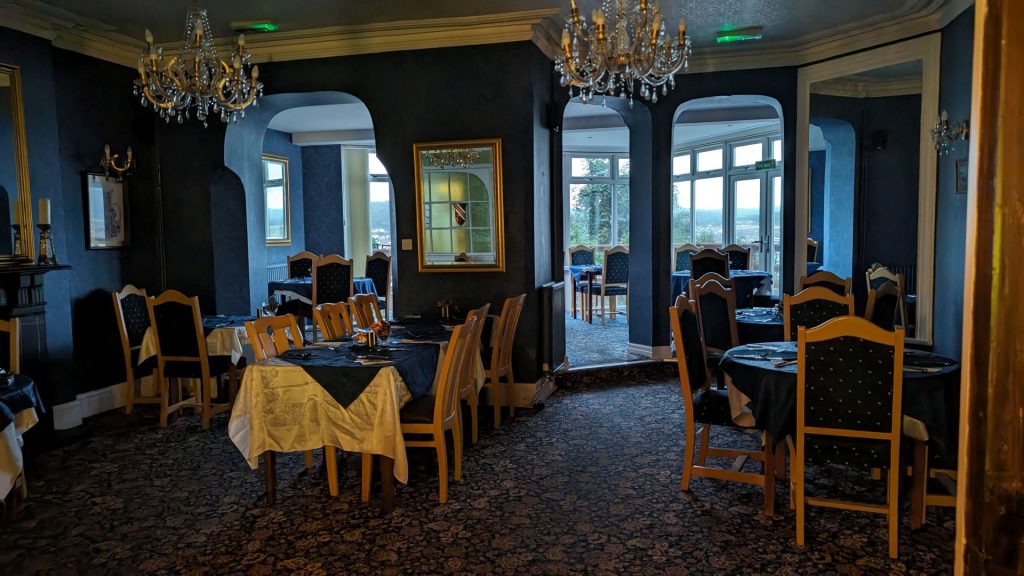
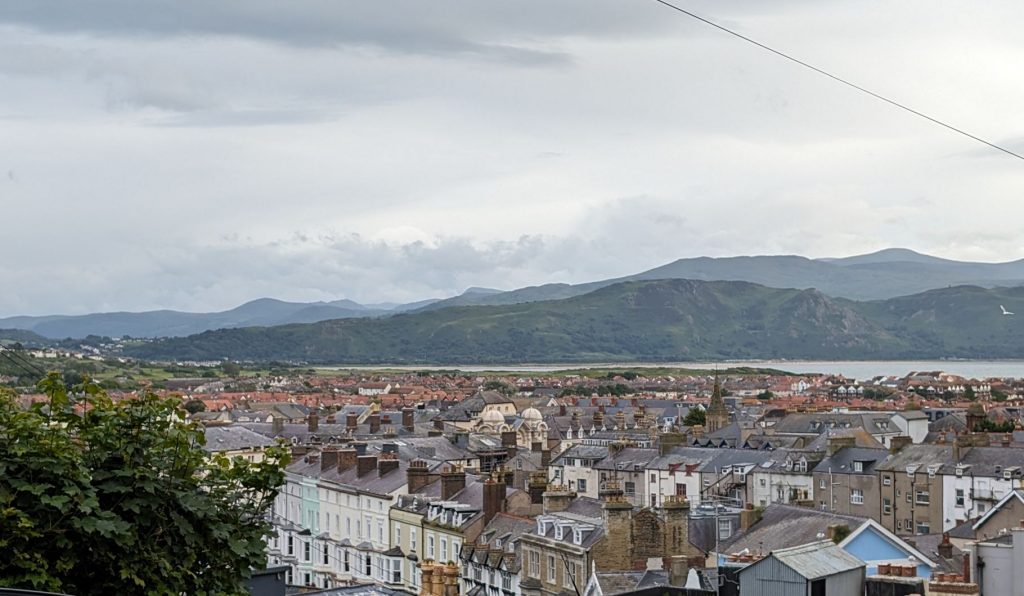
We went out for dinner at Harvey’s New York Bar & Grill. Why? I don’t know. But the food was good and the waitress gave us a tip about the “best” castle to visit. We changed our original plans based on her recommendation, and decided to go to Caernarfon Castle the next day.
From https://www.visitwales.com/things-do/attractins/castles-and-heritage/castles-and-forts-caernarfon:
“You’re a powerful English king in the prime of life and you want to build a bit of boulder bling to show the Welsh you mean business. What do you do? If you’re Edward I, you commission an Iron Ring of castles – a medieval warning to toe the line.
Edward built Castell Caernarfon (Caernarfon Castle) in the 1280s, at roughly the same time as two of his other blockbusters, Harlech and Conwy. The cost of this show of might was colossal – a good 90 per cent of his nation’s annual income. He was a cultured, wealthy ruler and he wanted to be sure everyone knew it.
He didn’t just hire any old team of builders – he brought in Jacques de Saint-Georges d’Espéranche from Savoy near Lake Geneva, the master military architect of the age. The sturdy walls and octagonal towers of Castell Caernarfon (Caernarfon Castle) were decorated with bands of different coloured limestone and sandstone, the interior boasted murals by the artist who also decorated Westminster Hall, and there was glass in the windows. The castle also featured state-of-the-art comforts such as bathrooms, toilets and running water.
But its main function was to boldly impress and intimidate, striking a hammer blow into the hearts of any locals who dared question his authority. The main King’s Gate was designed to be defended by a drawbridge and no less than six portcullises, plus arrow loops, spy holes and murder holes, through which deadly substances and objects could be hurled down onto attackers.”
The investiture of Charles, Prince of Wales (later King Charles III), took place in Caernarfon Castle, on July 1, 1969. The ceremony formally presented the title of Prince of Wales to the 20-year-old Charles, eldest son of Queen Elizabeth II.
And there are legends! Here’s one: With its long, eventful life span over different eras, Caernarfon Castle has accumulated a unique mix of history, myth and legend. Ghostly apparitions are said to haunt its grounds, unexplained voices echo through its empty rooms and secret tunnels supposedly hide beneath its depths, or so the local myths go.
Here is an aerial picture taken from a website. The rest of the pictures, in no particular order, are mine.
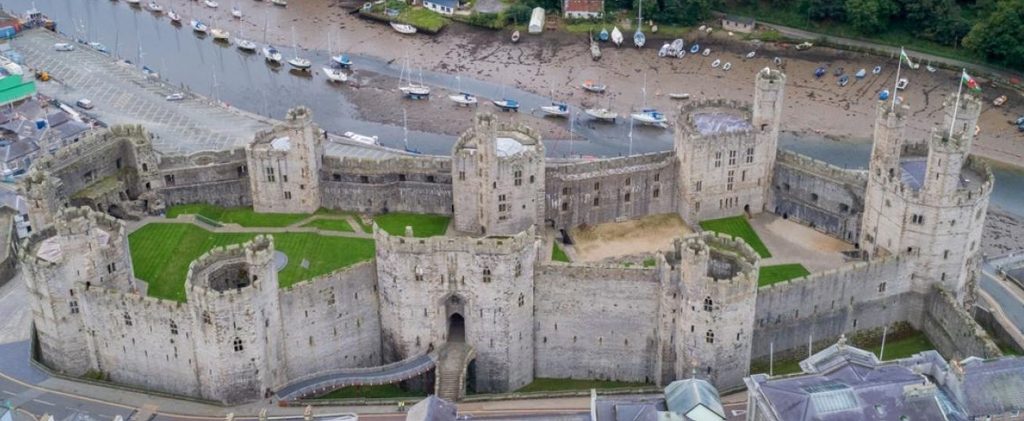
As we approached the castle, we couldn’t help but notice and be amused by the two-keeled sailboats. The tides in the UK are crazy different from high to low, so sailboats have two keels so the boat can sit on the ground at low tide. I mean, the other option is to tip to the side. But these guys were all resting on their double keels.
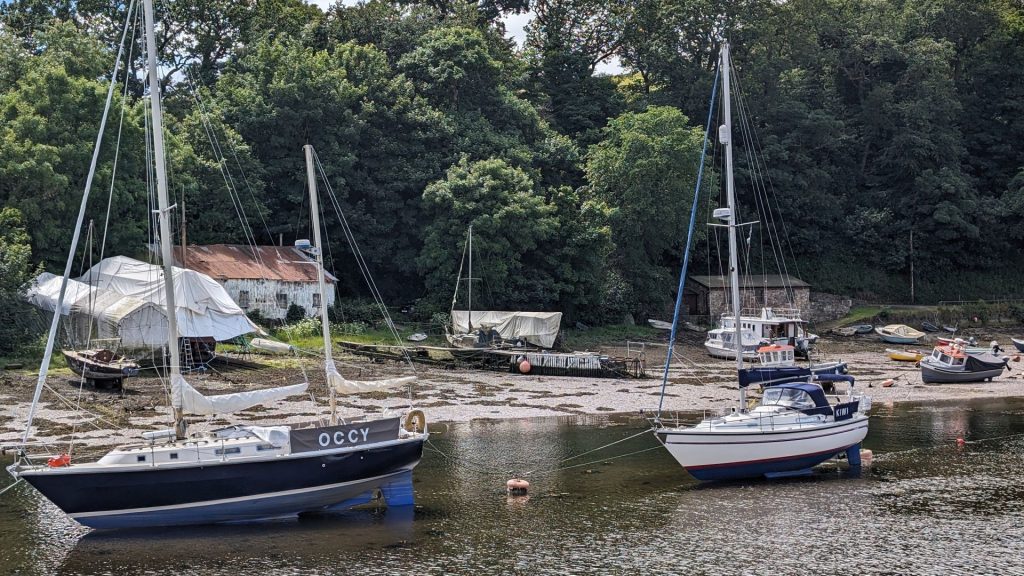
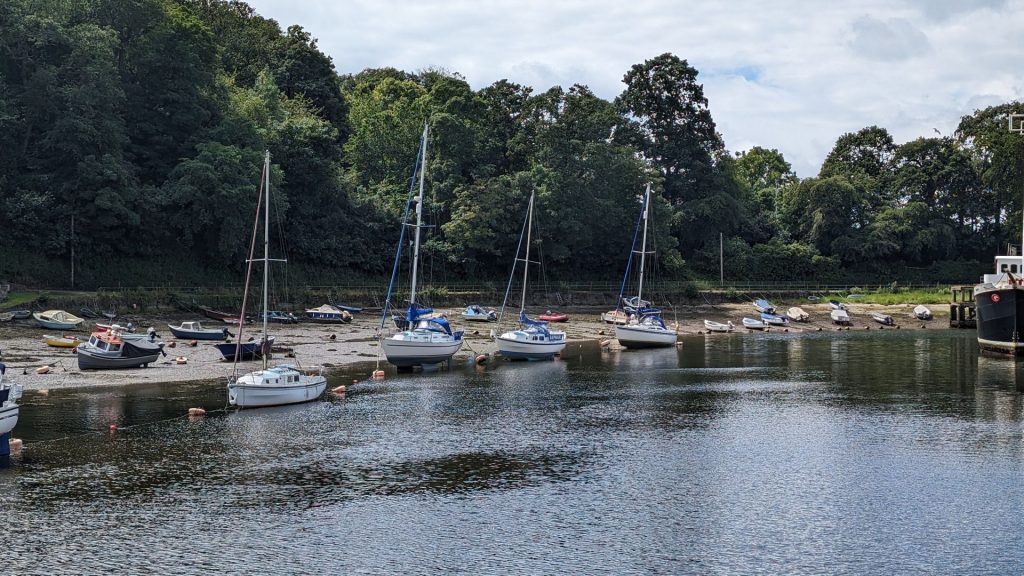
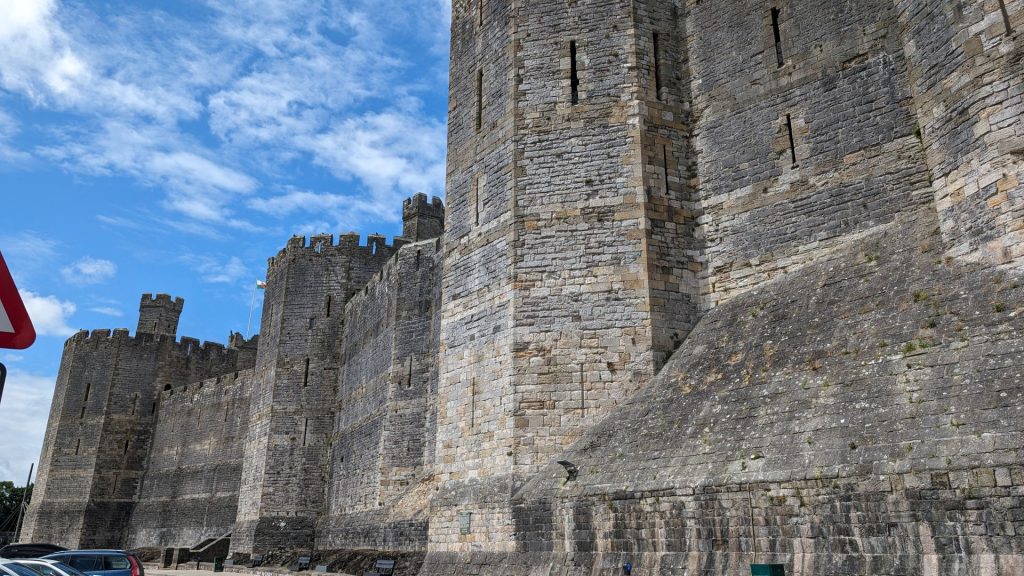
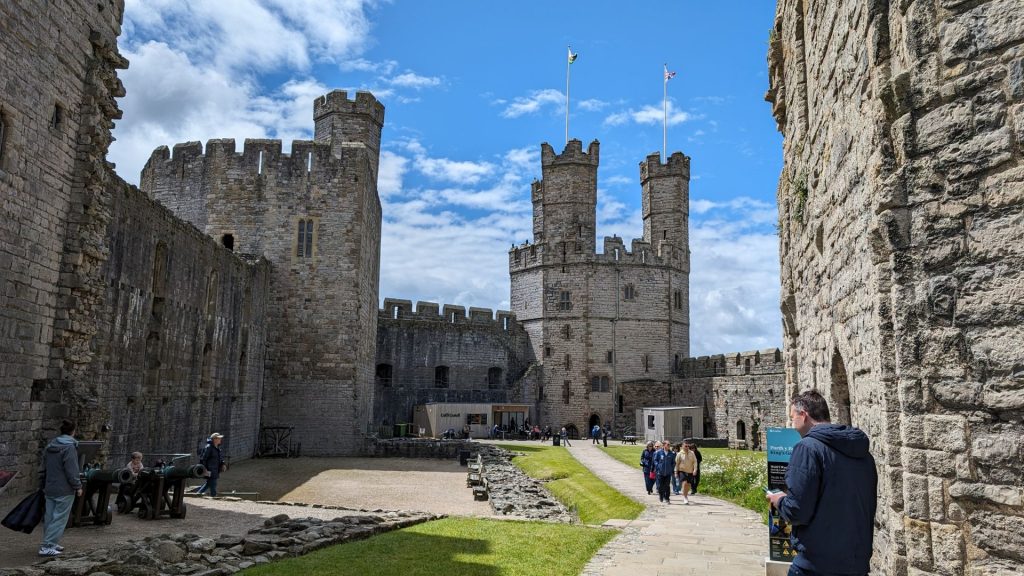
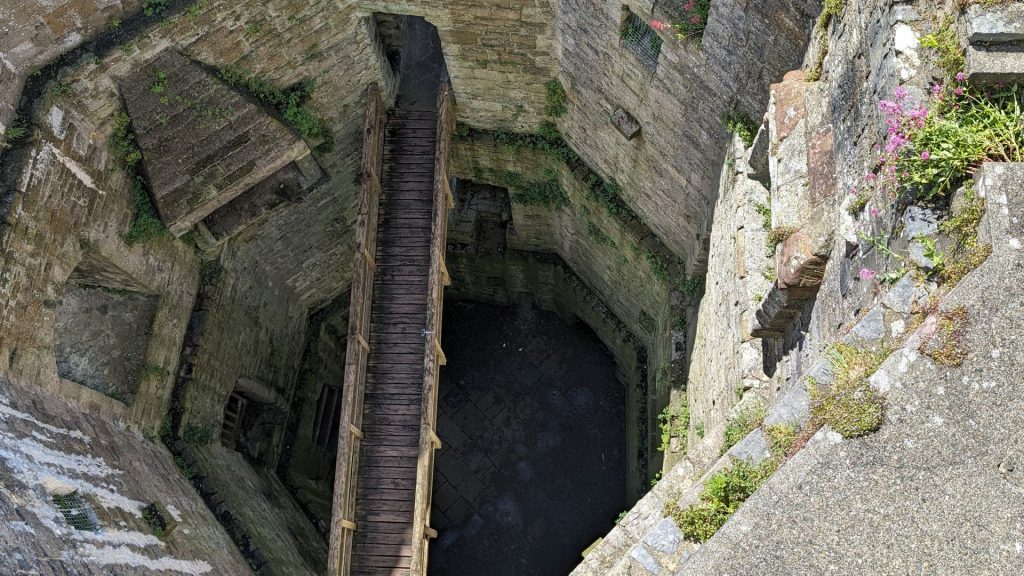
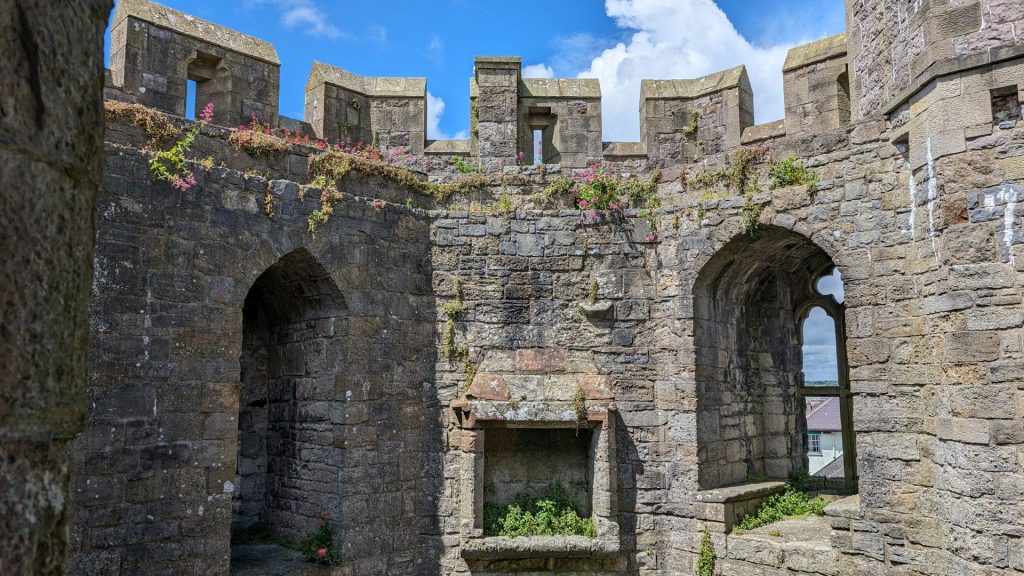
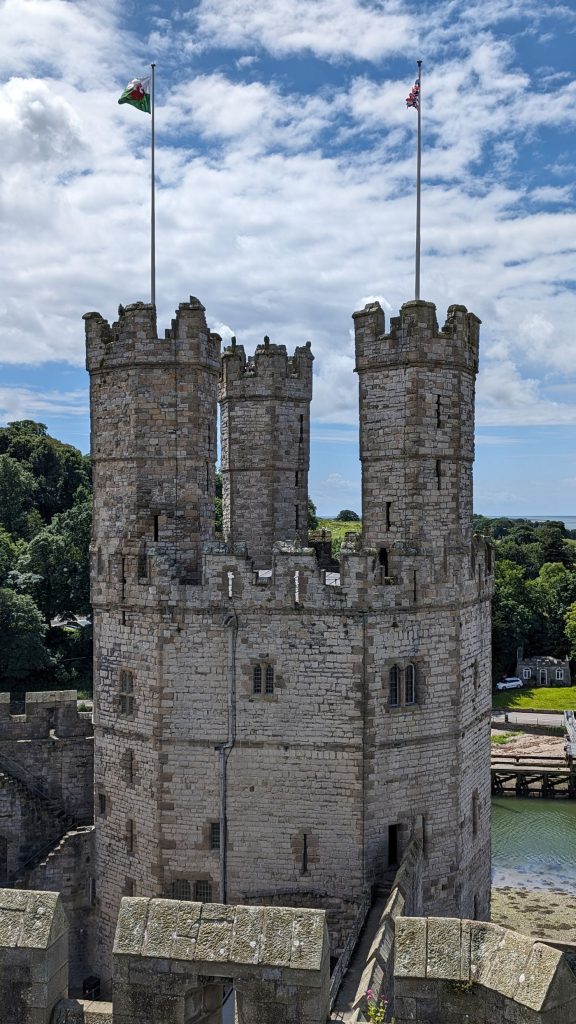
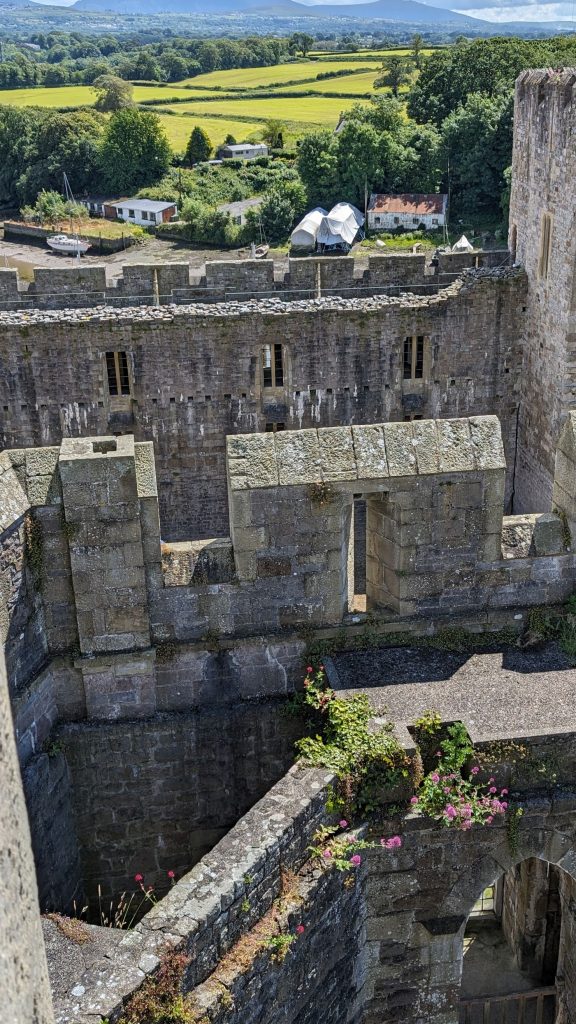
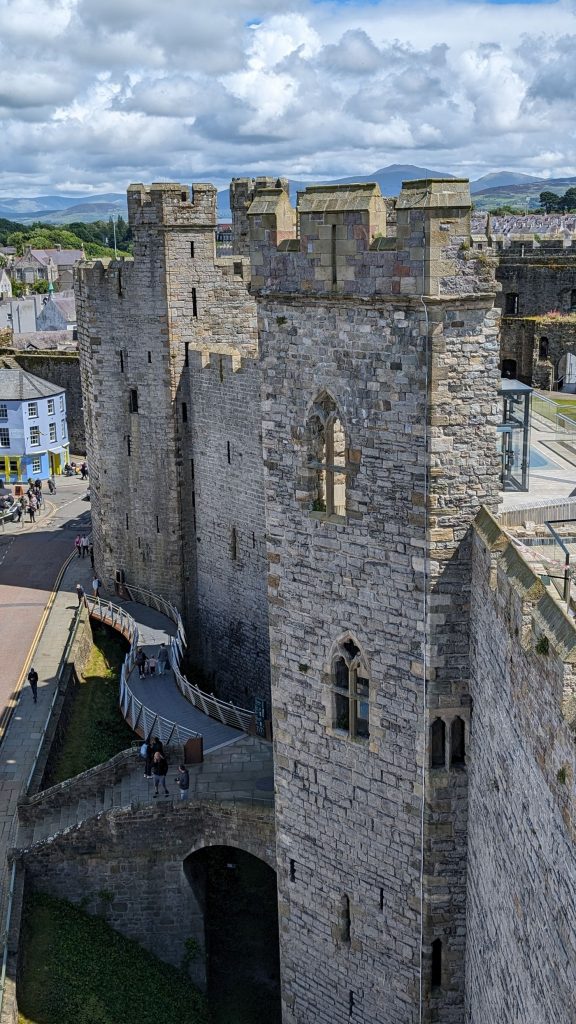
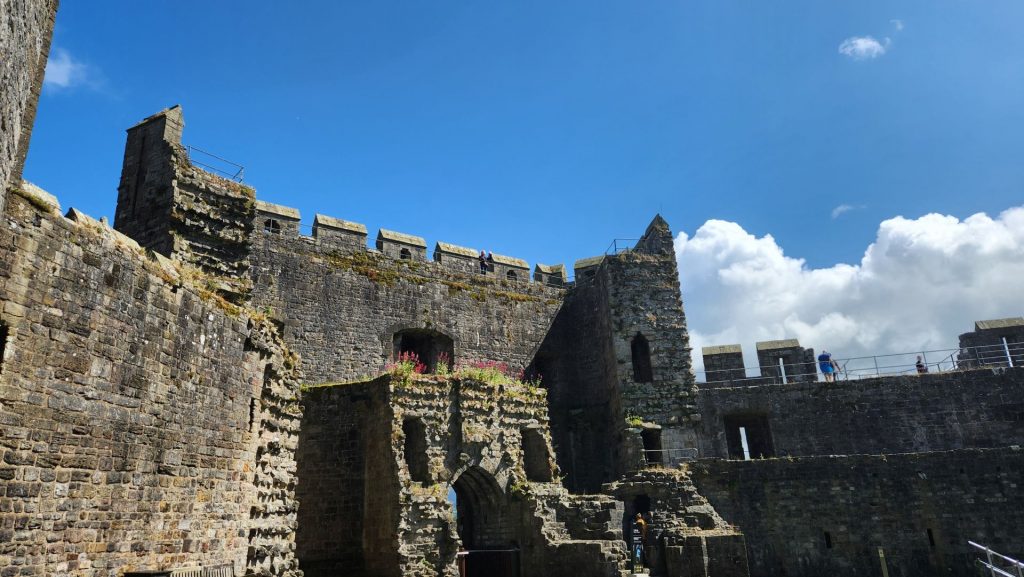
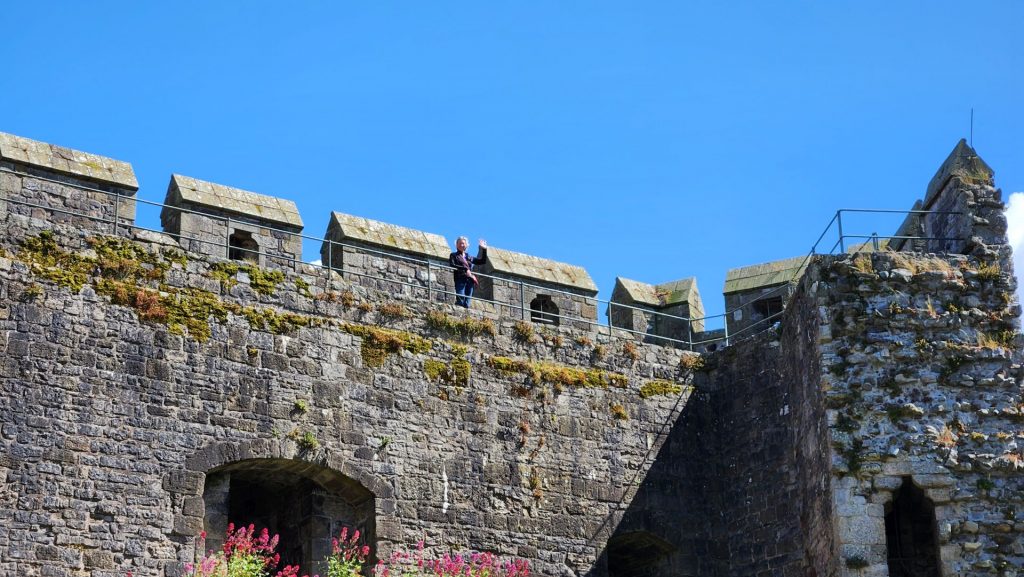
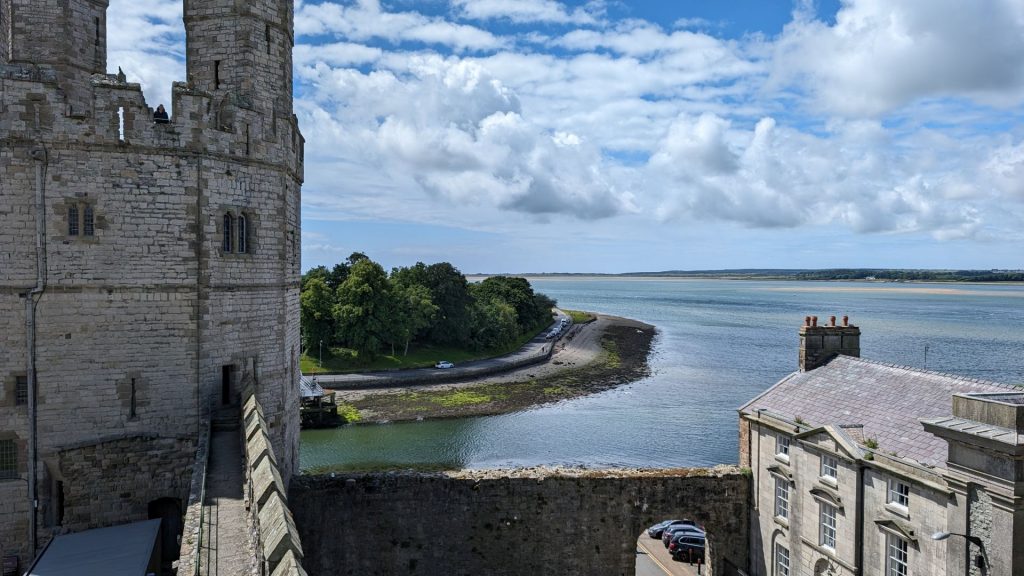
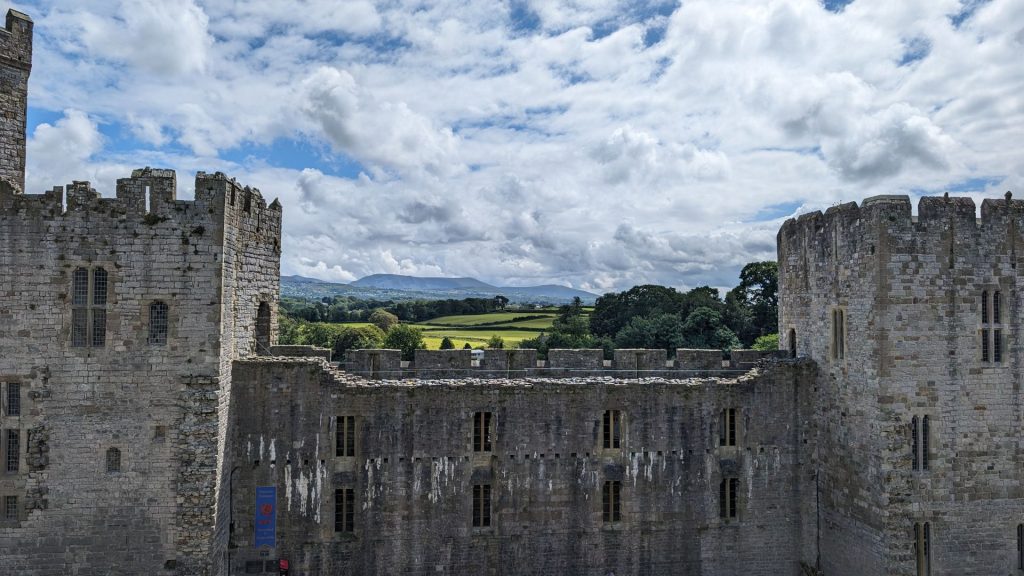
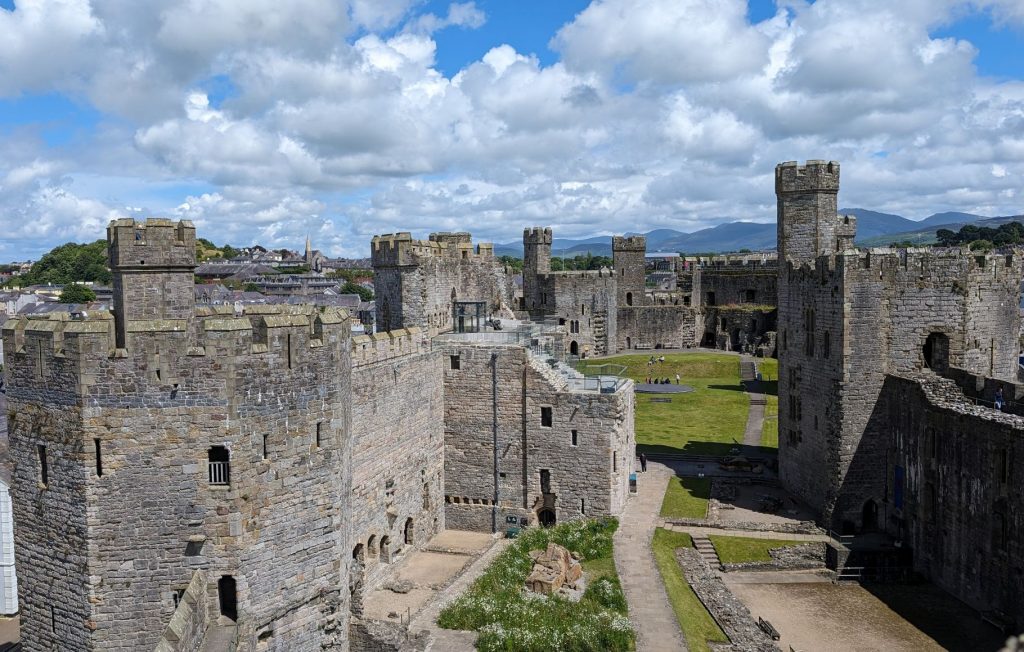
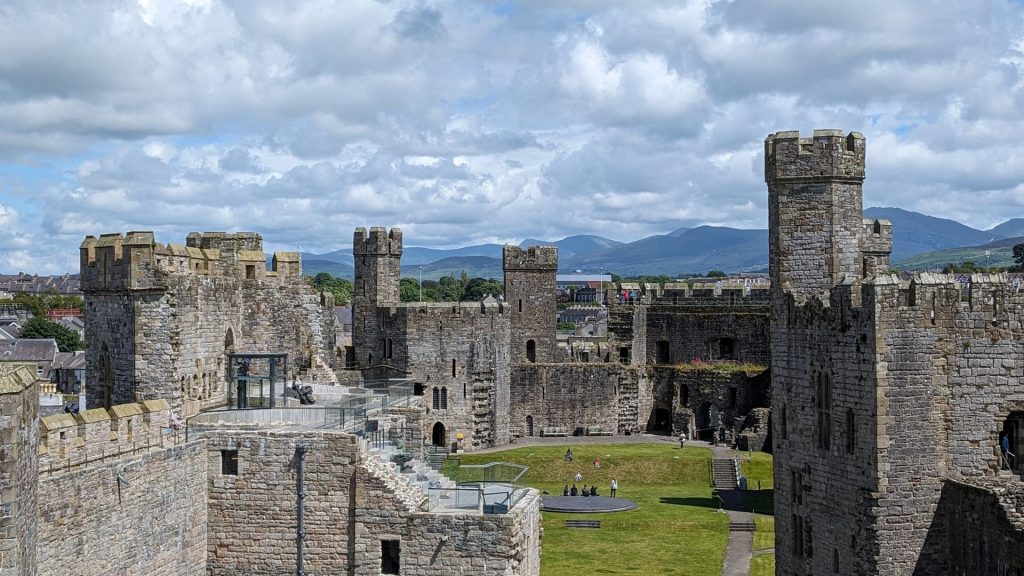
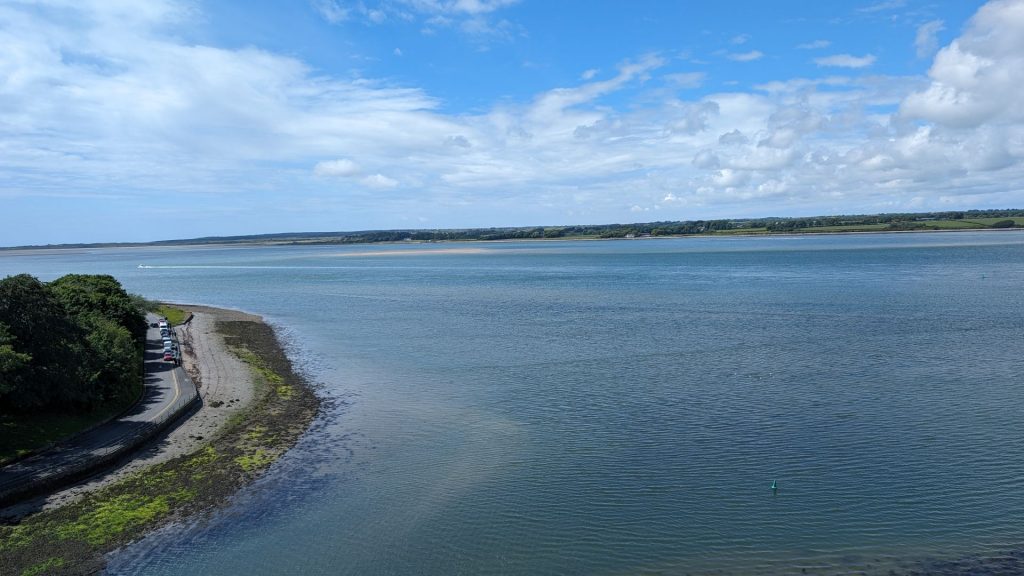
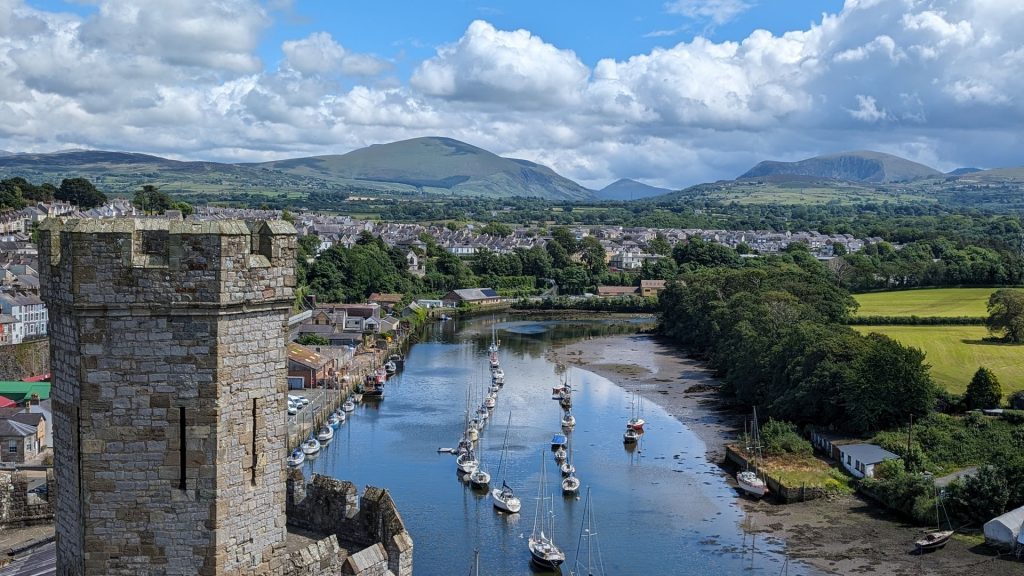
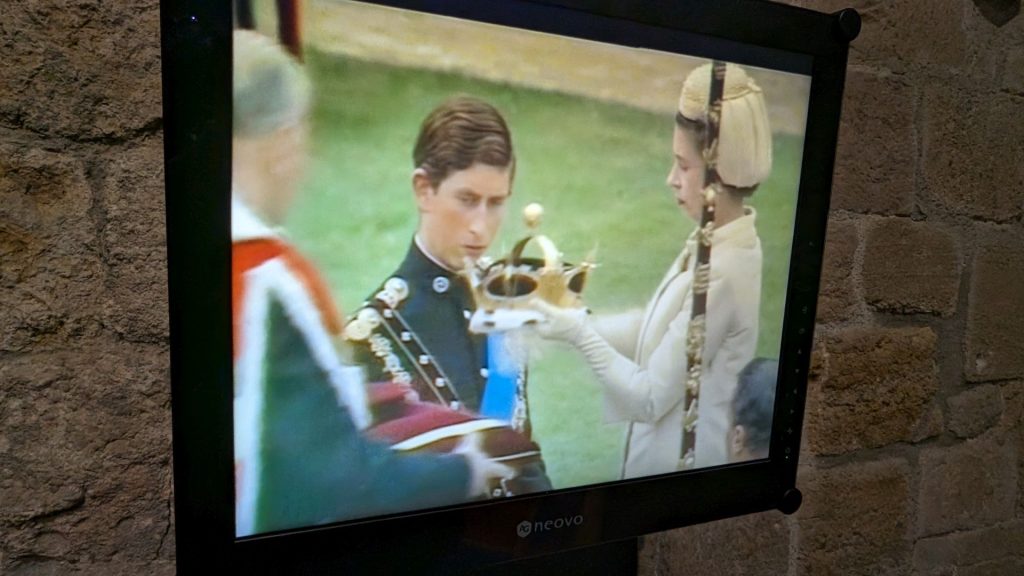
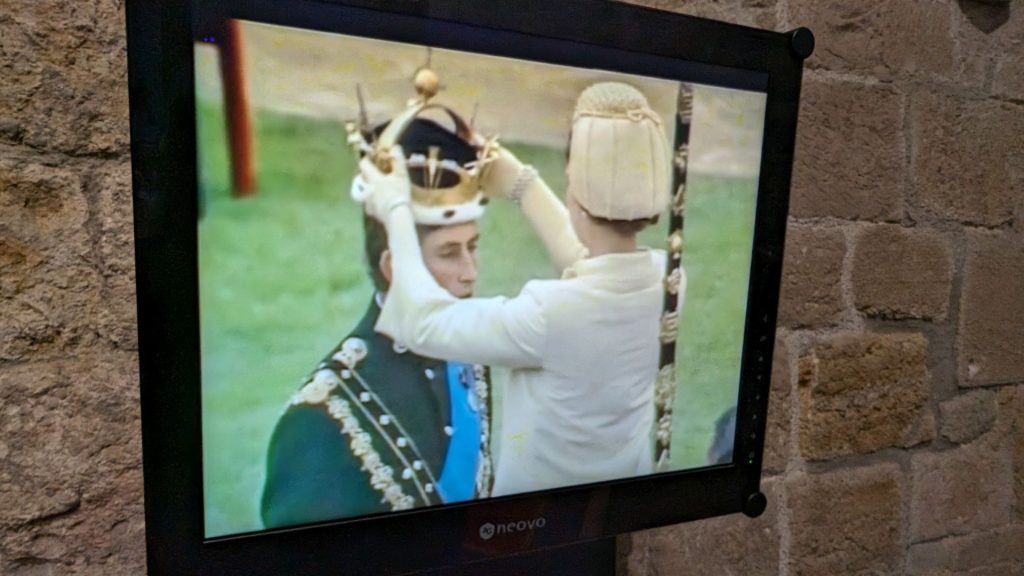
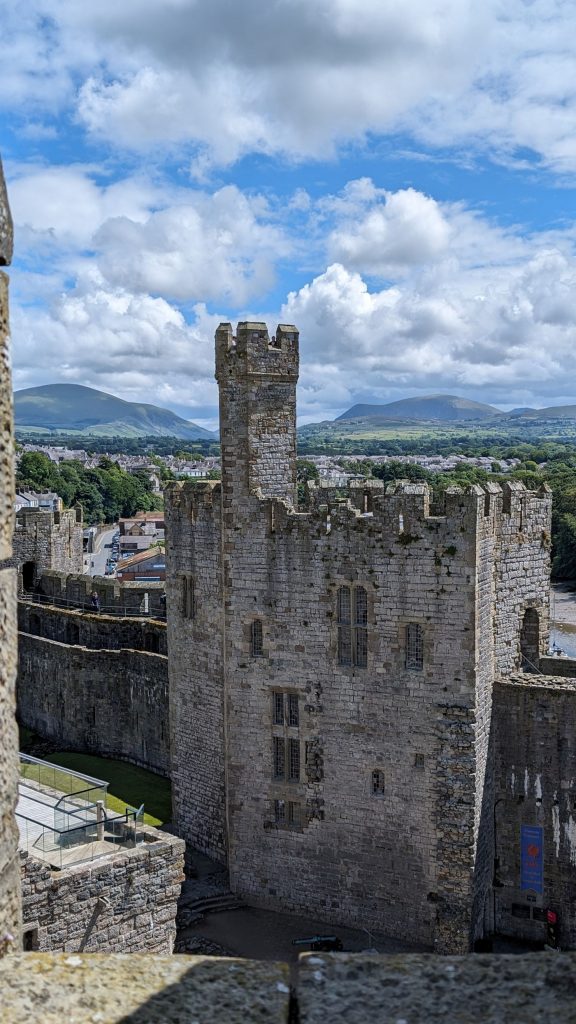
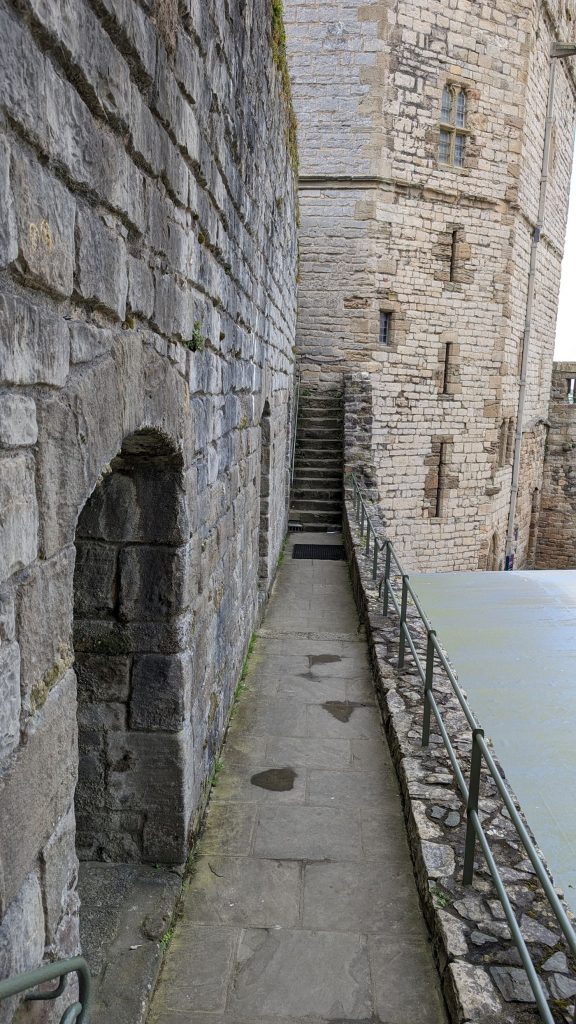
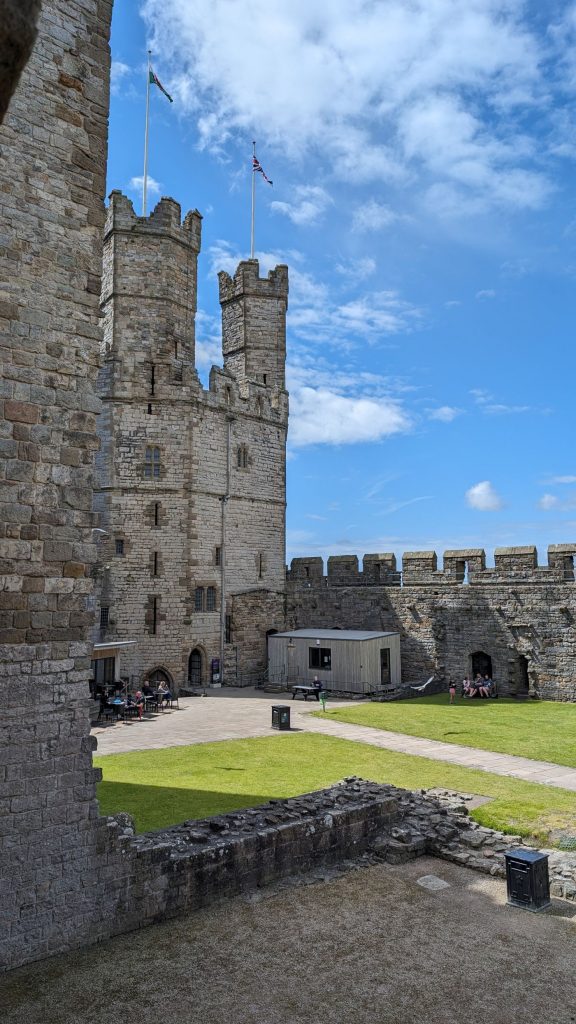
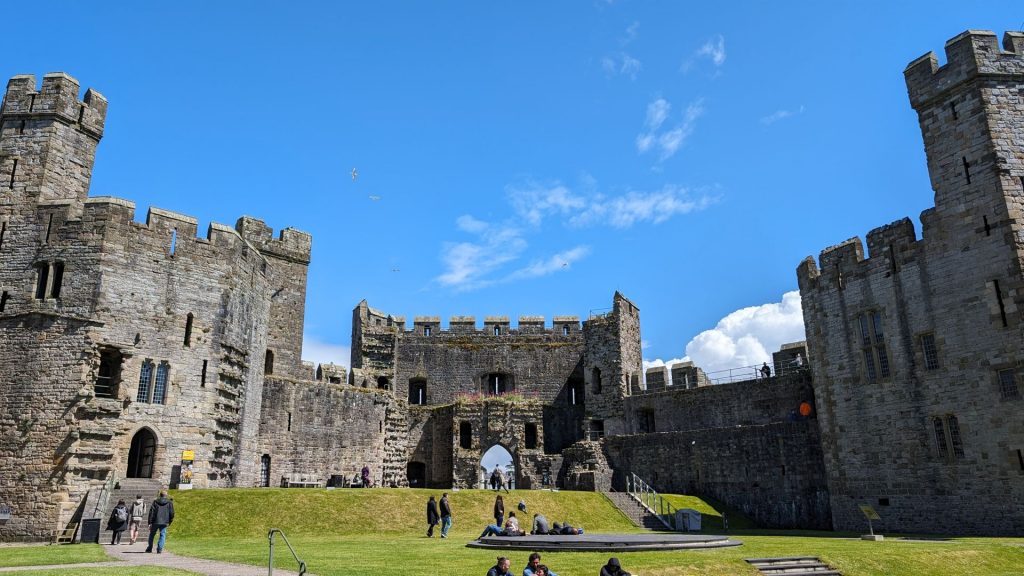
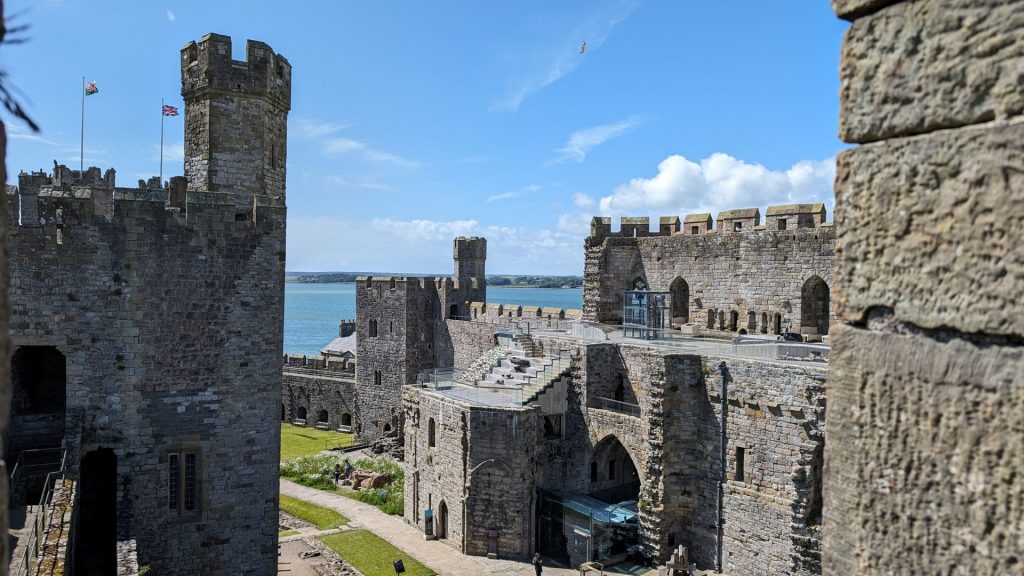
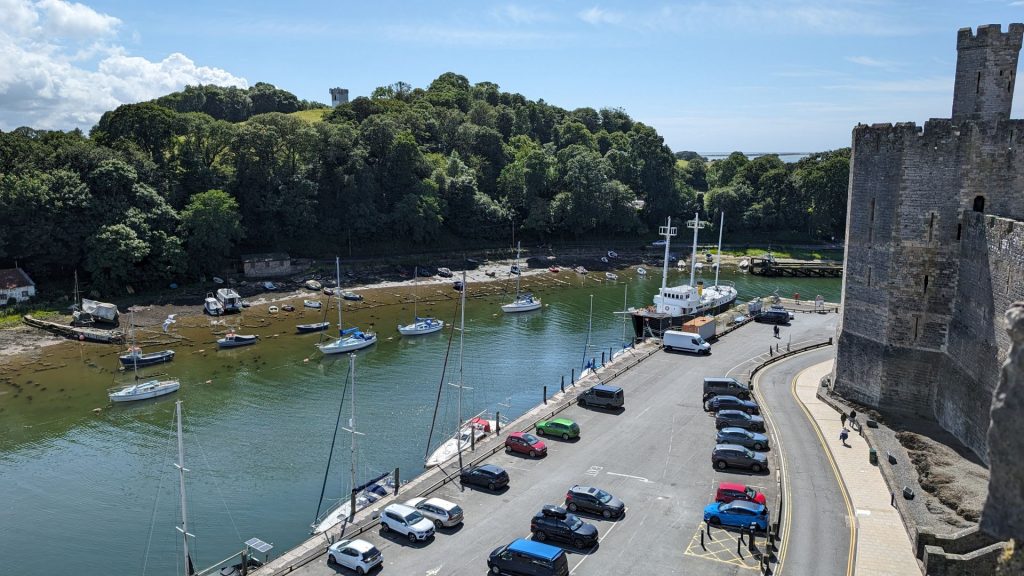
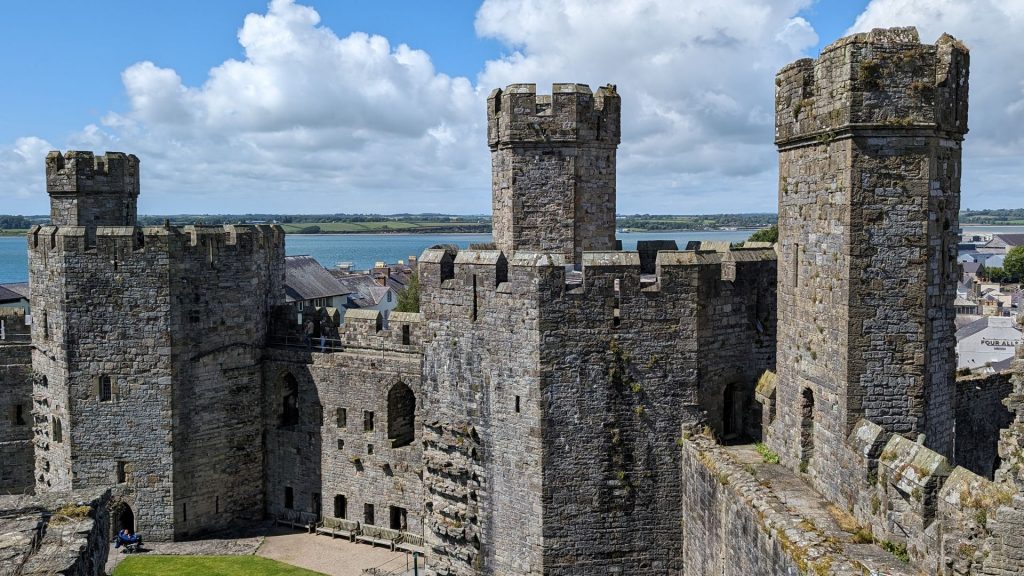
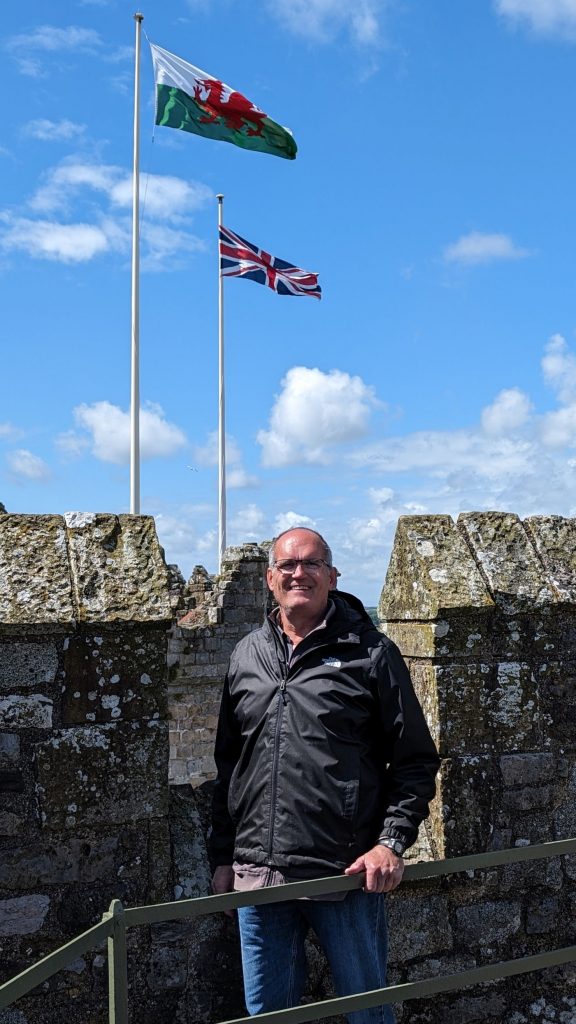
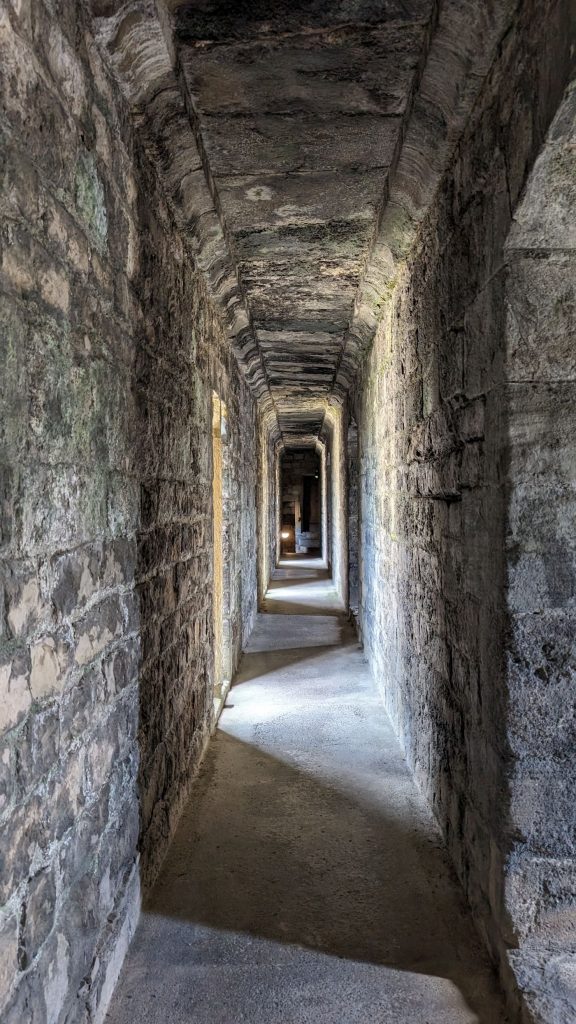
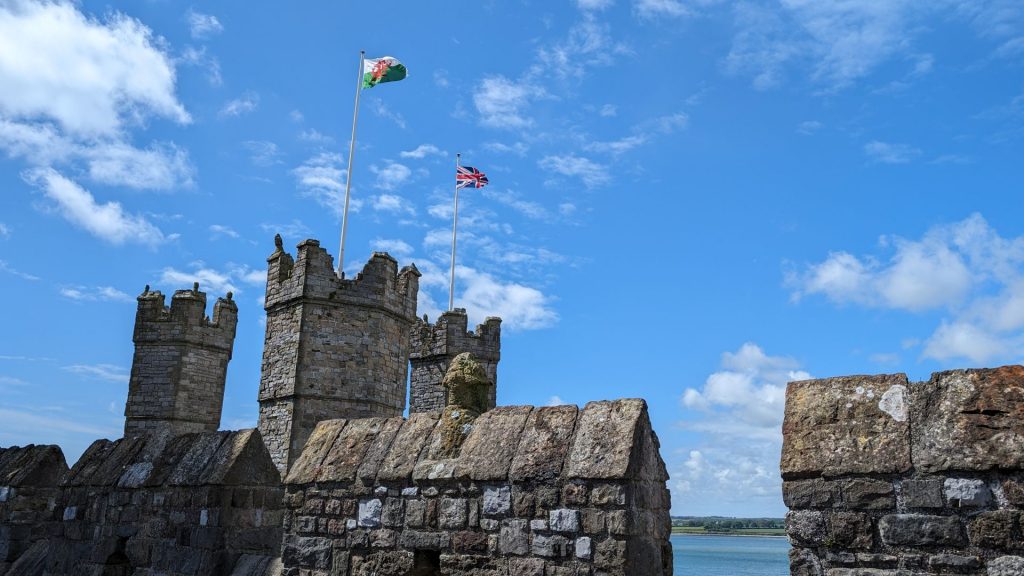
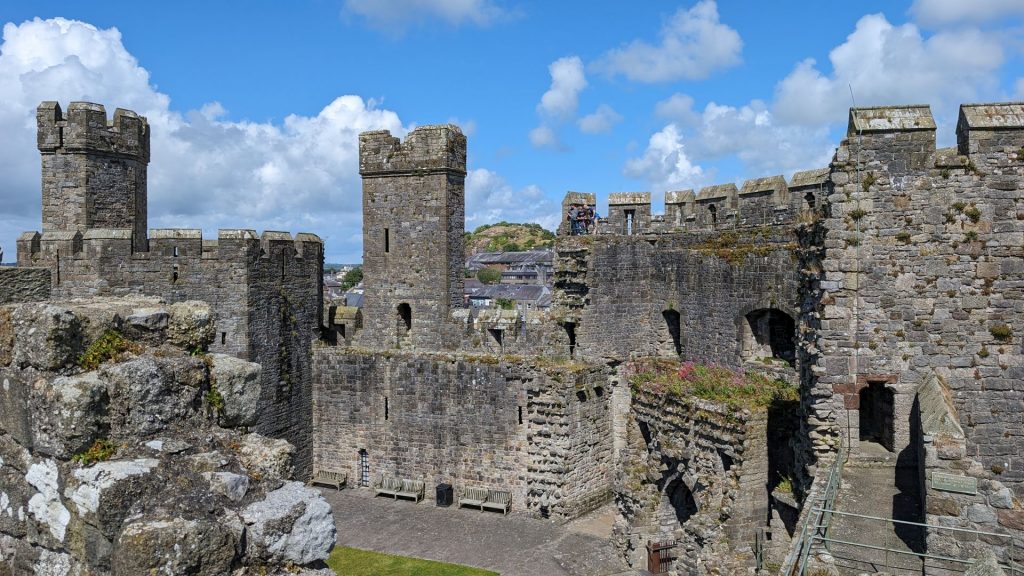
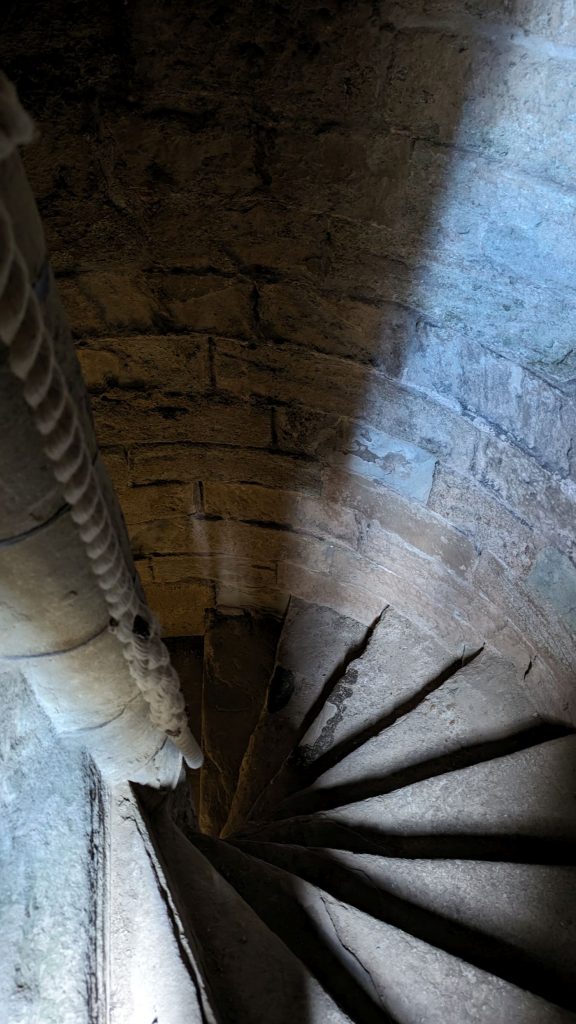
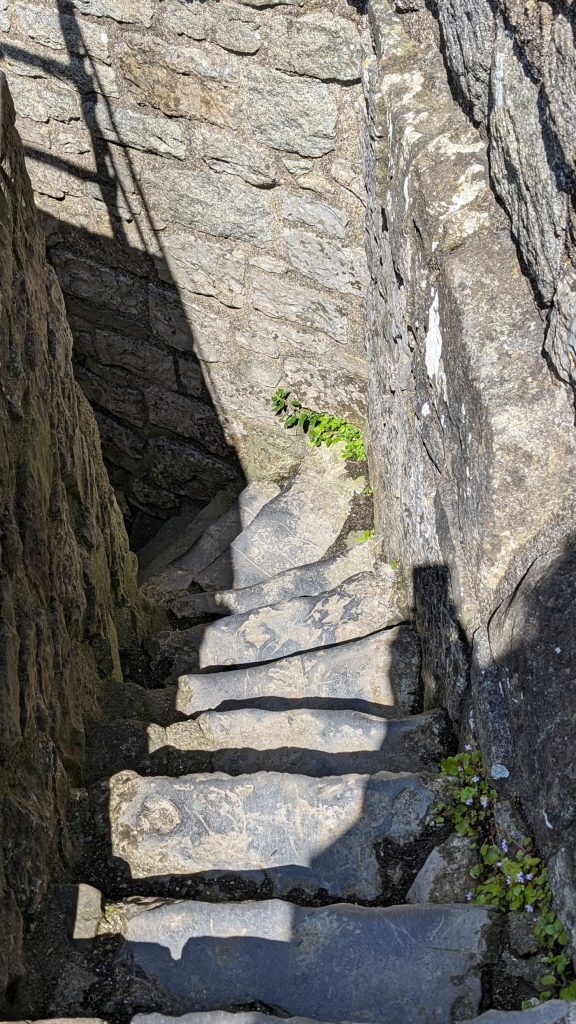
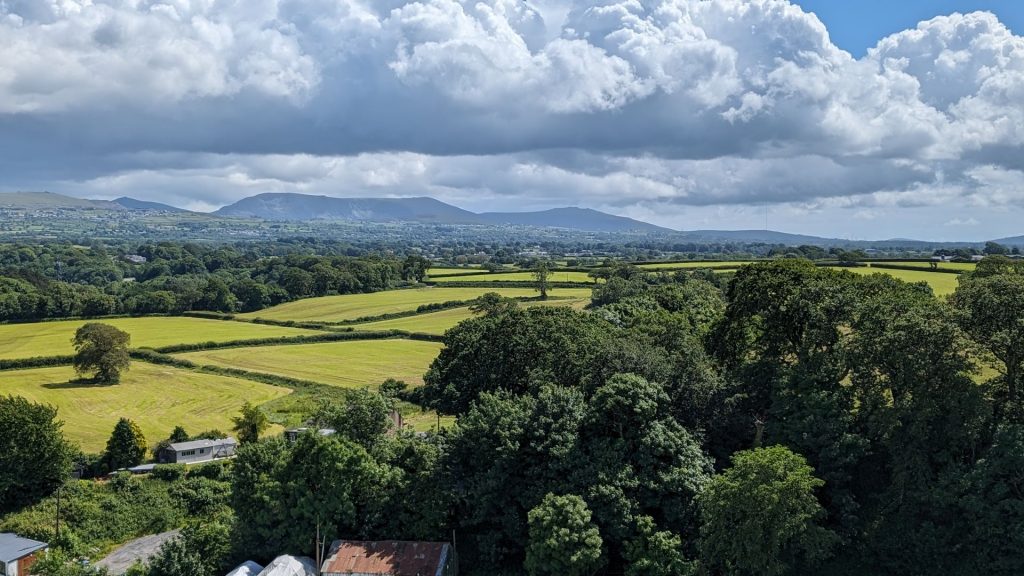
There was a huge “pseudo chess set” in one section of the castle. It was used to identify various lords, princes and kings of England along with a brief description of each.
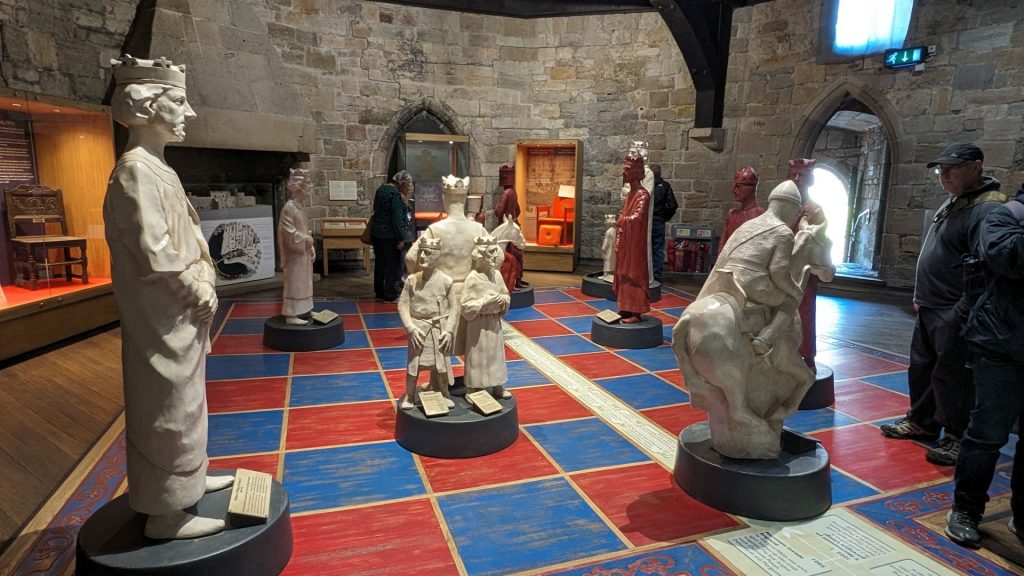
We had some food at The Palace Vaults, then headed back to the hotel. We’d gotten a late start due to rain, so it was a short day of sightseeing, but well worth it!
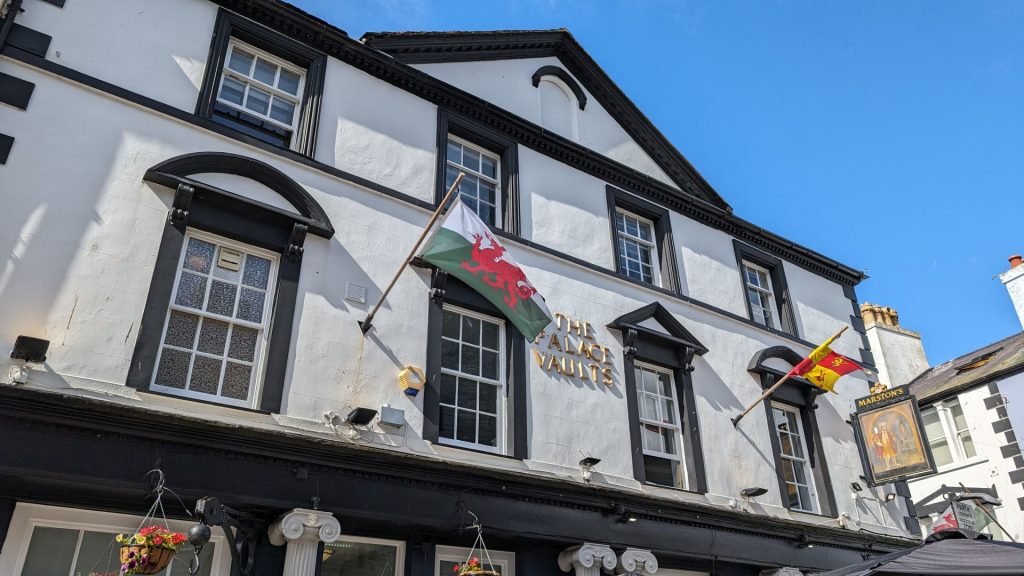
Our next post will include more of Wales as well as the Magical Mystery Tour in Liverpool.
